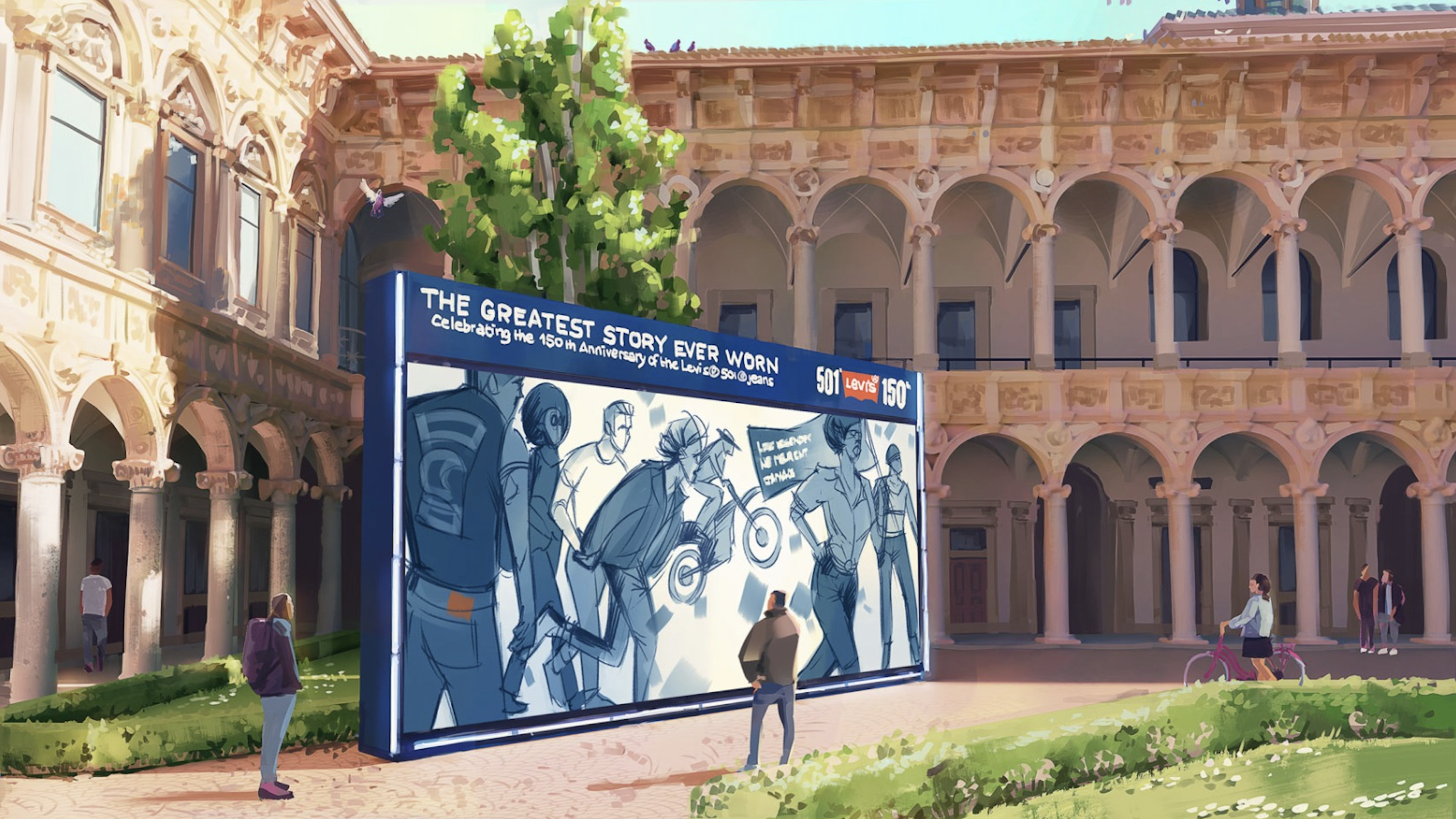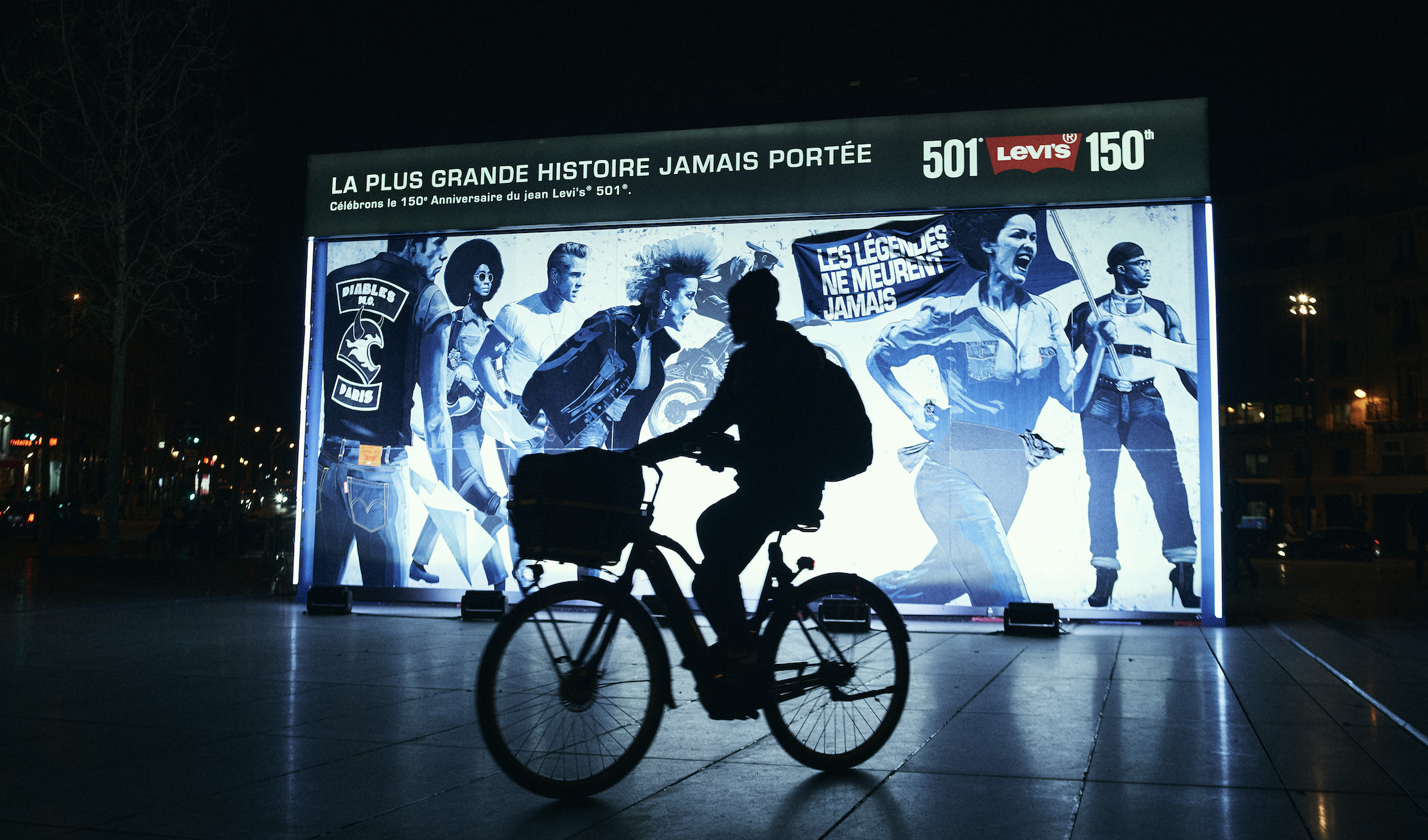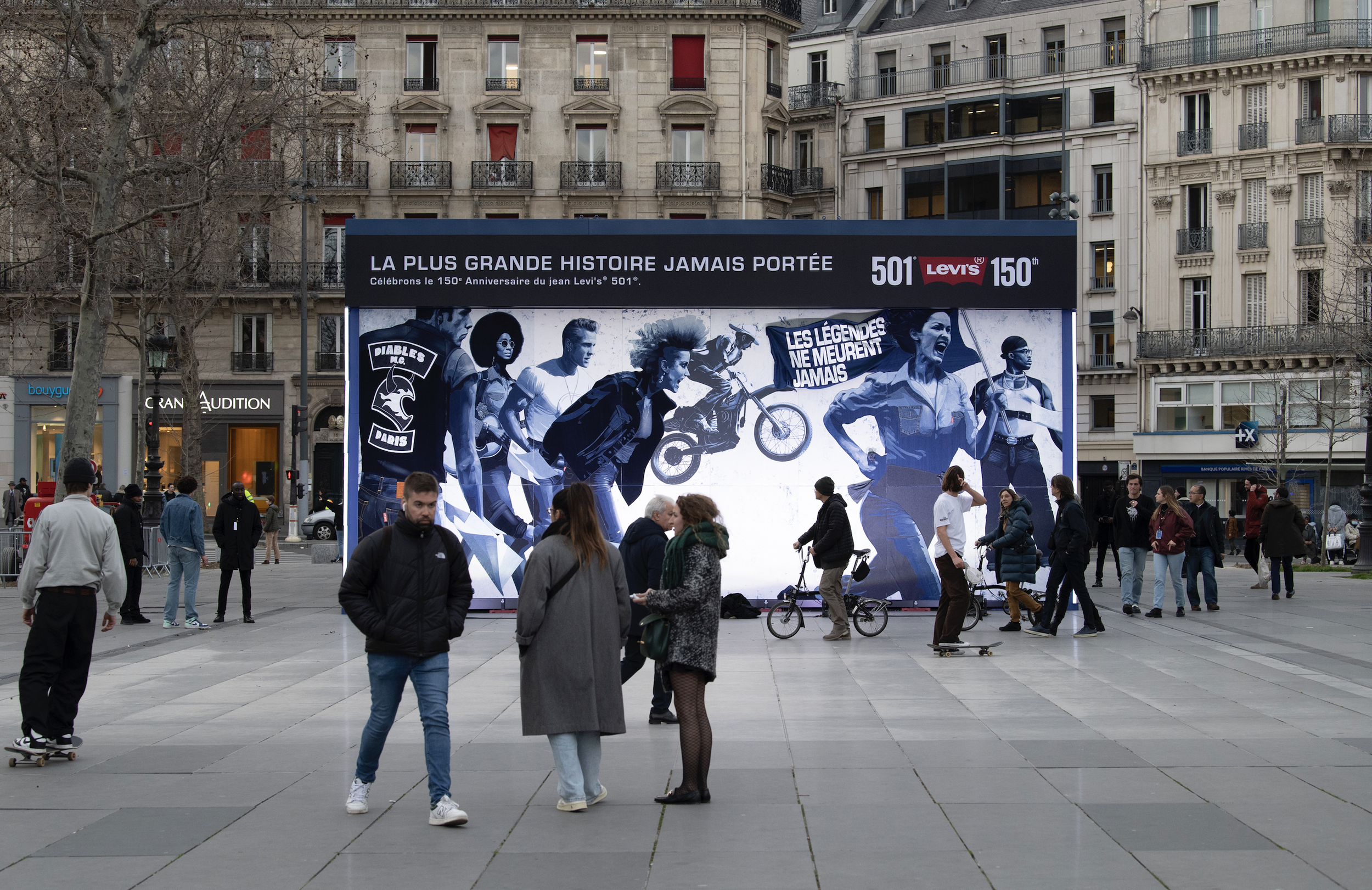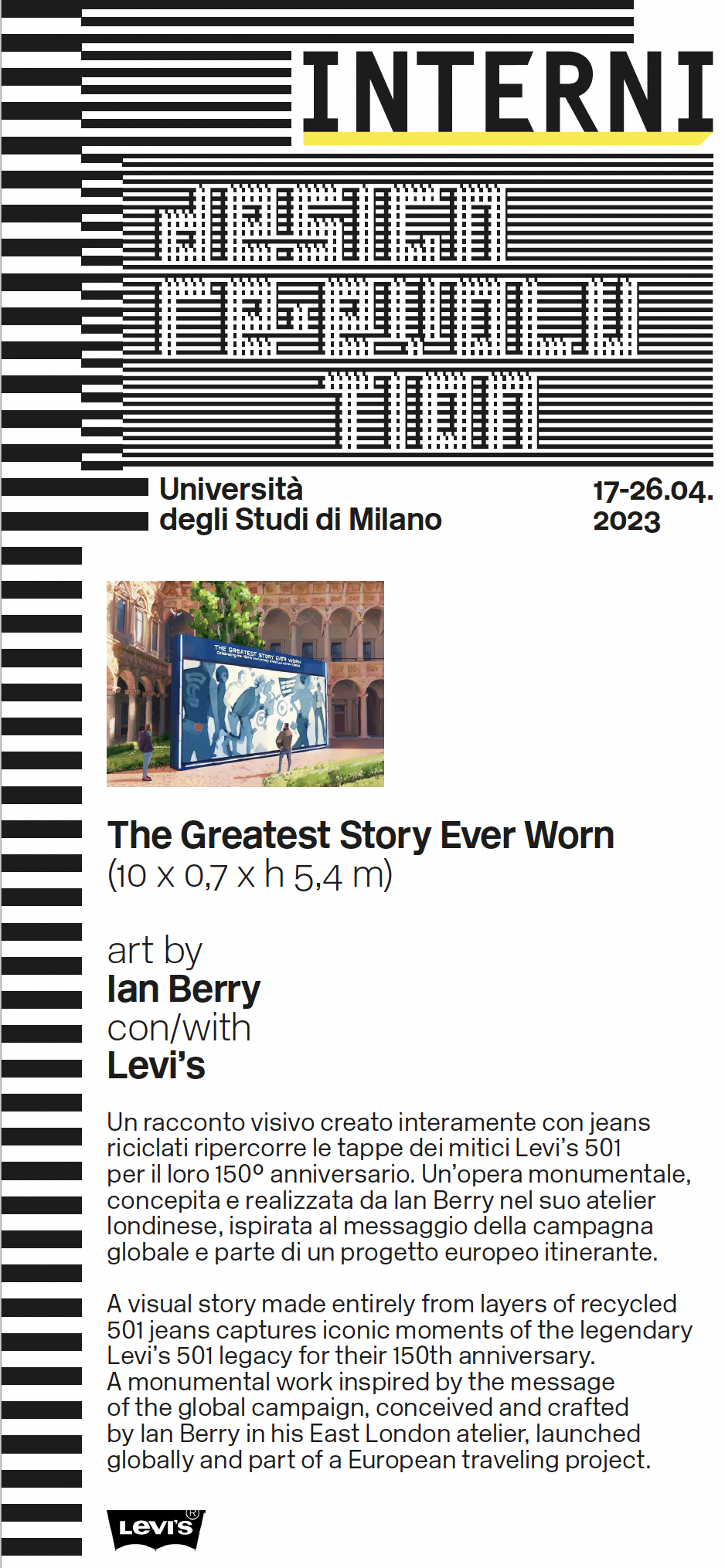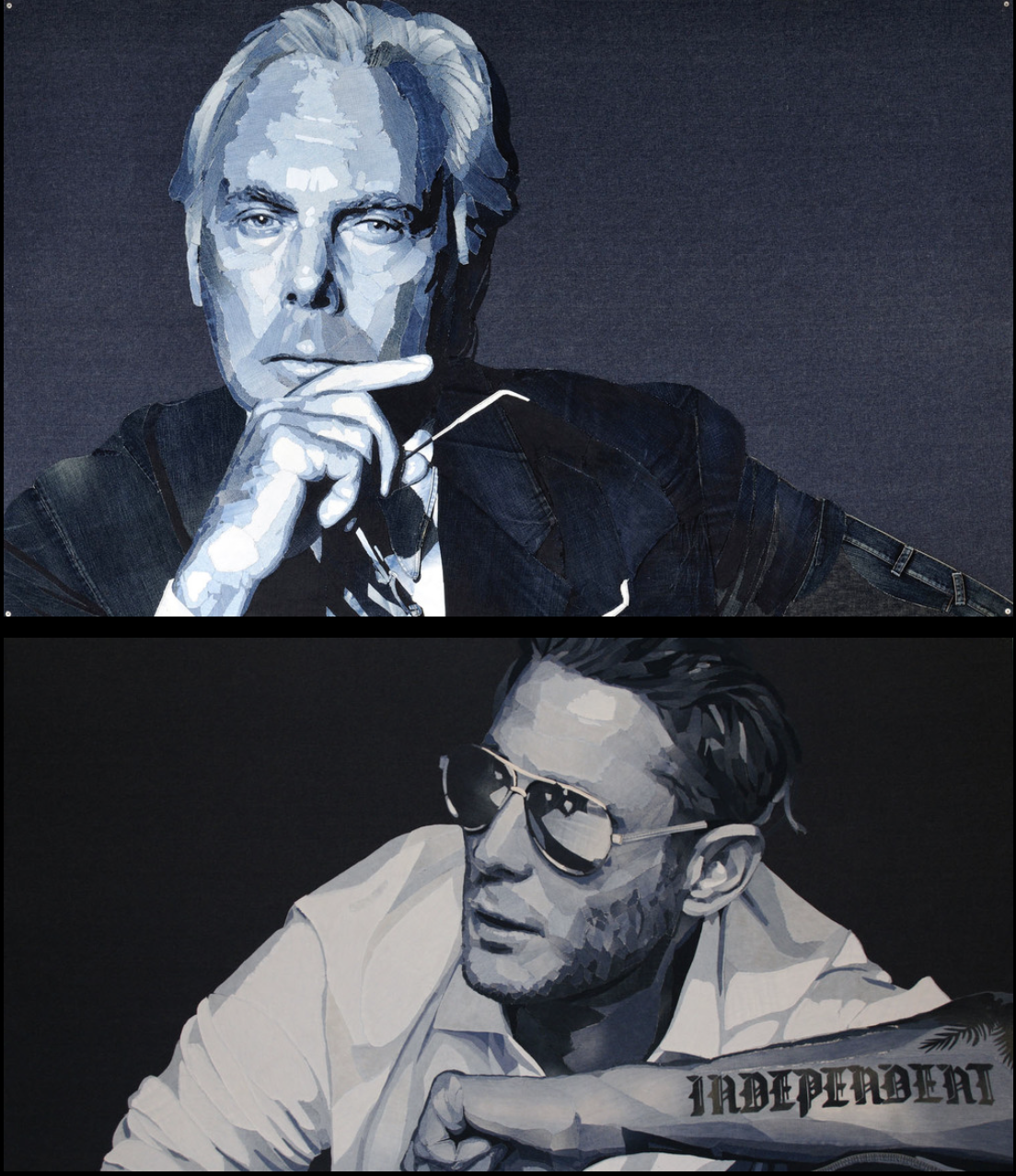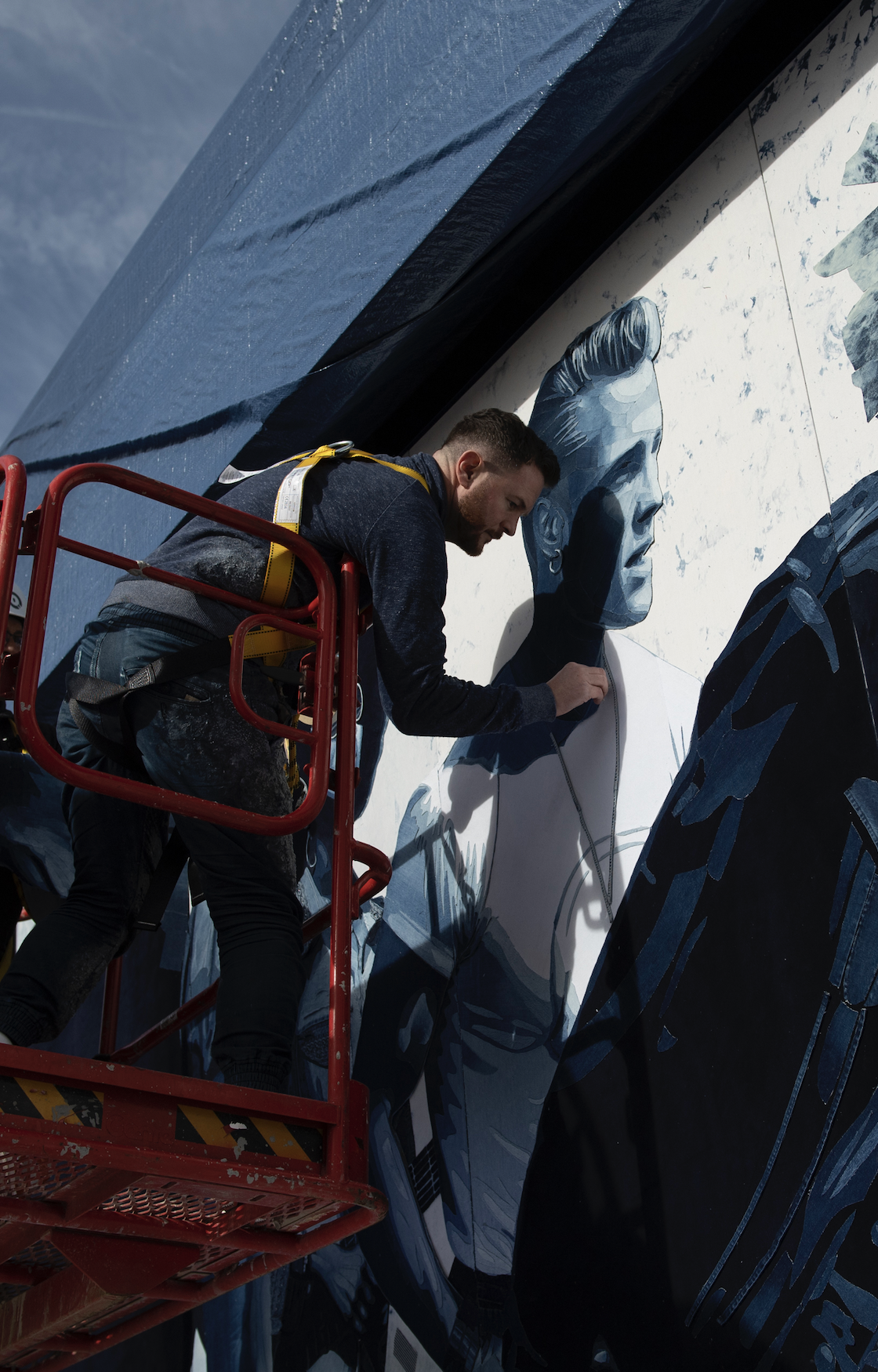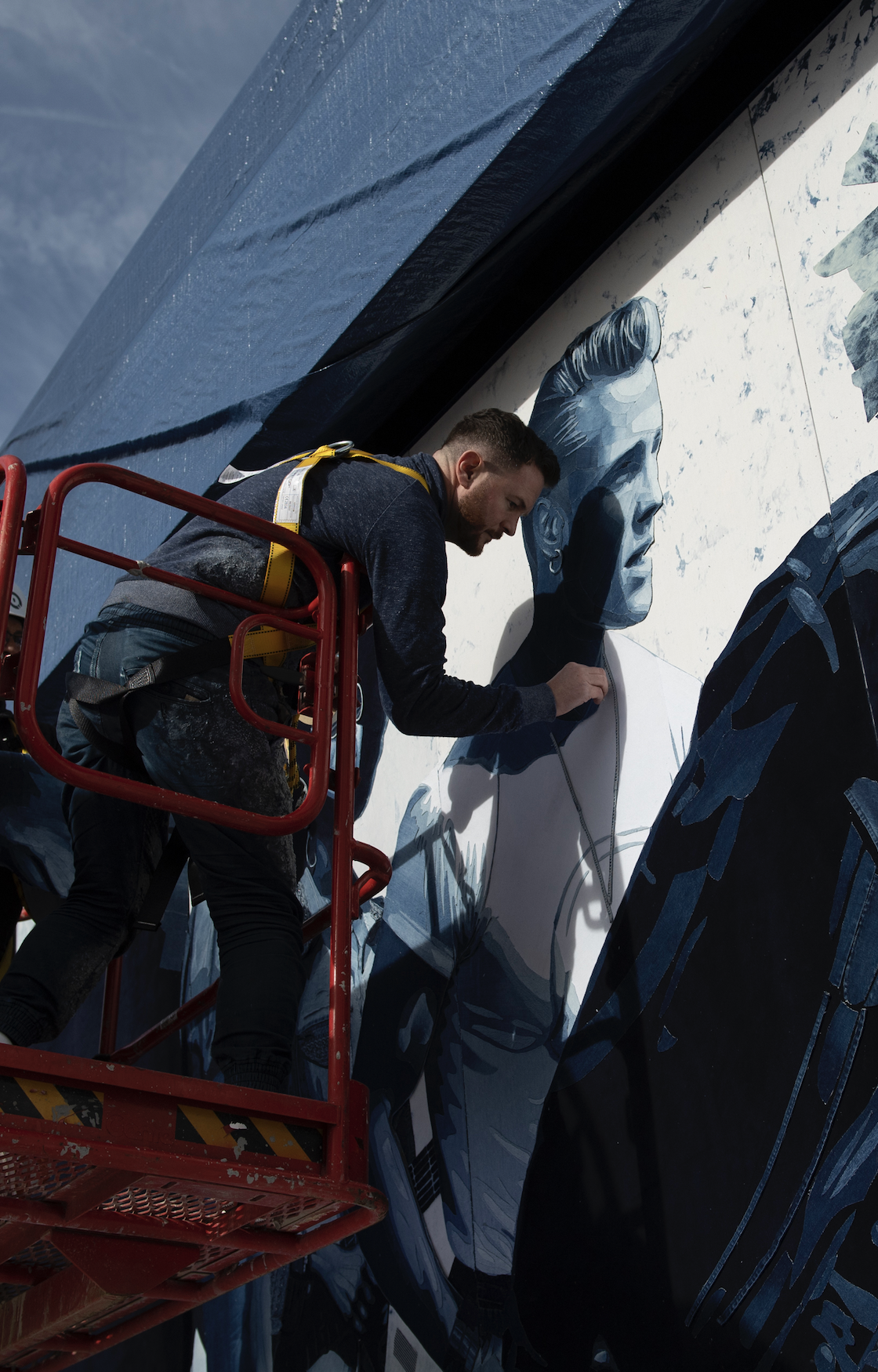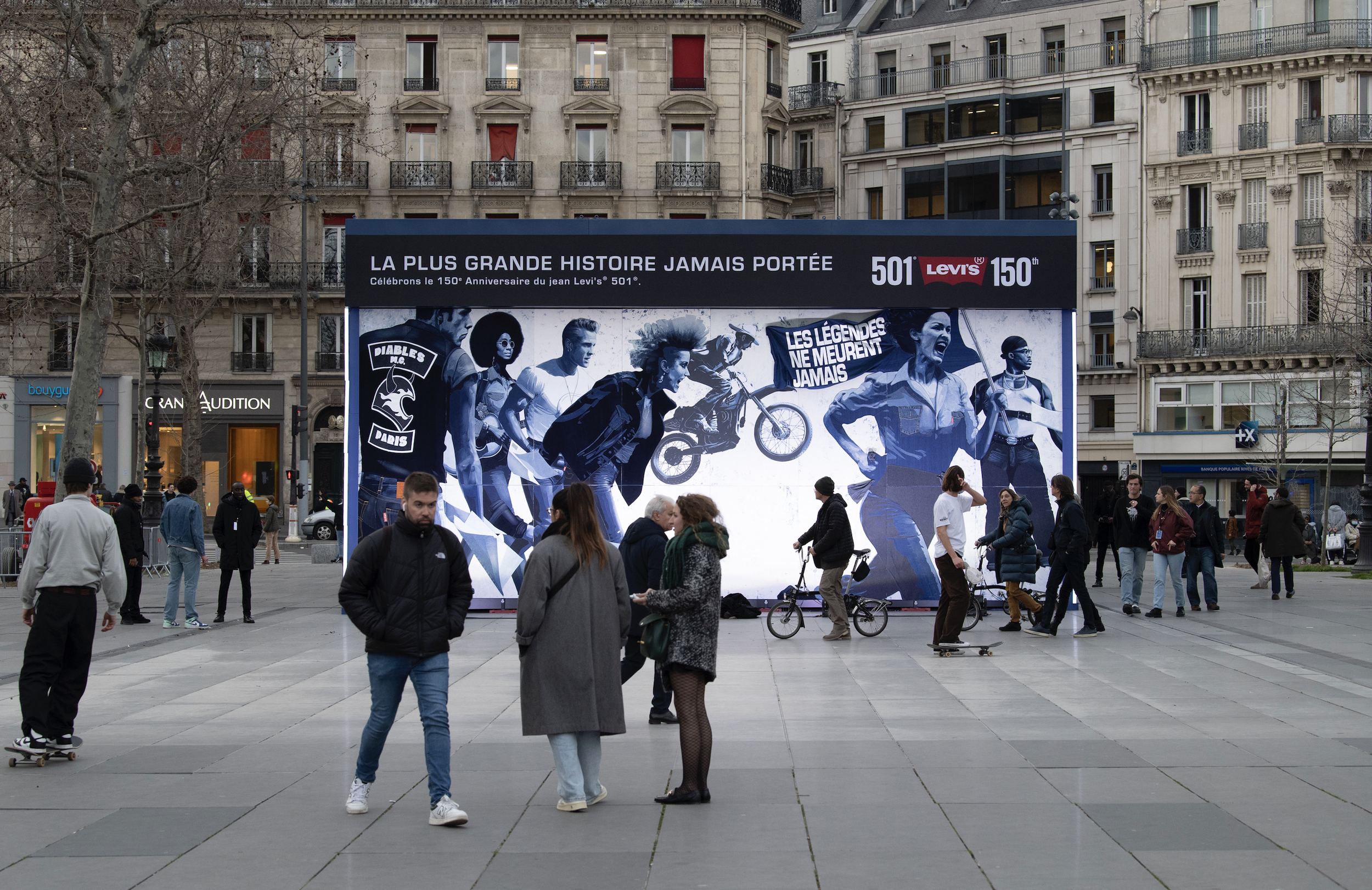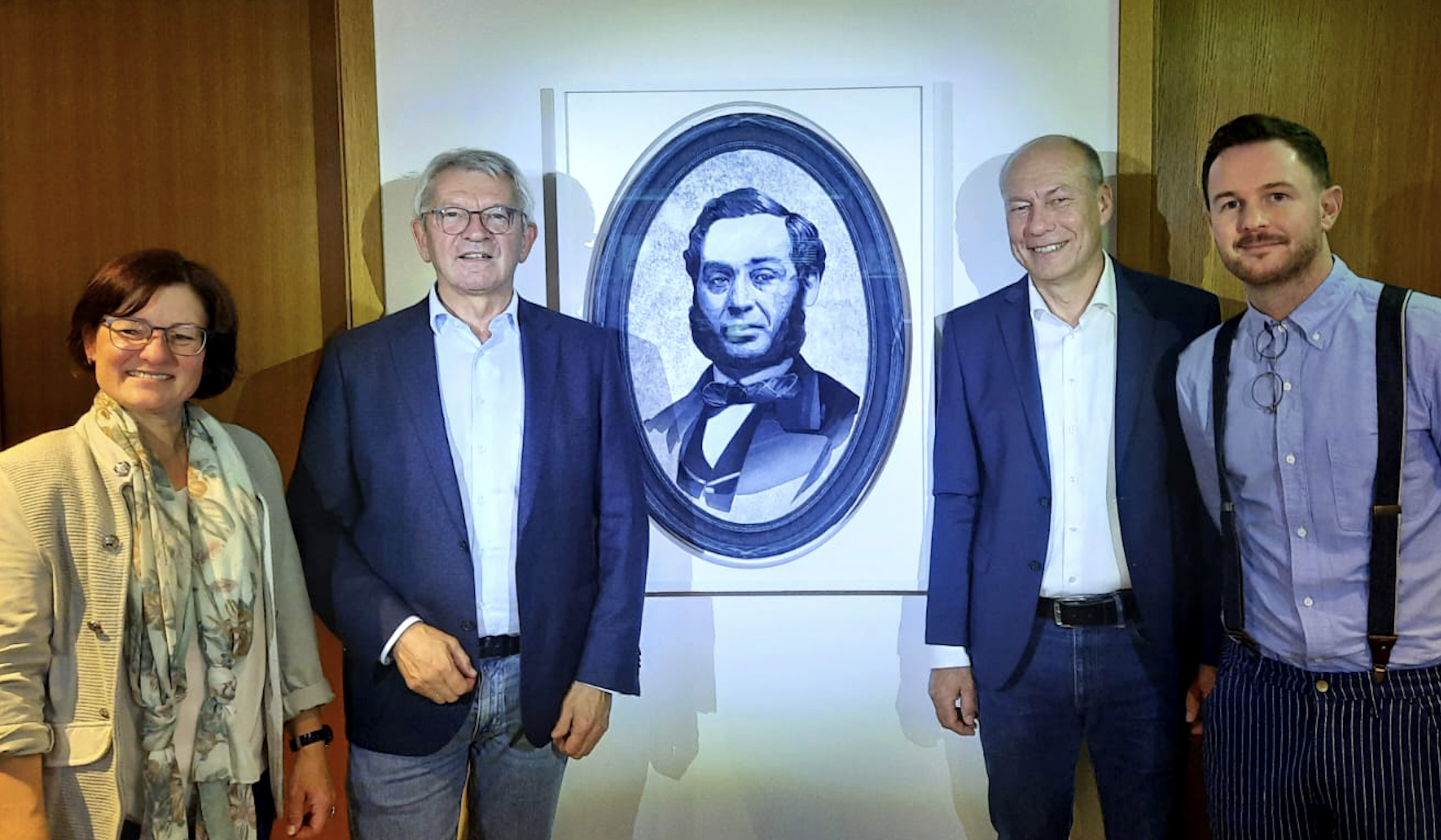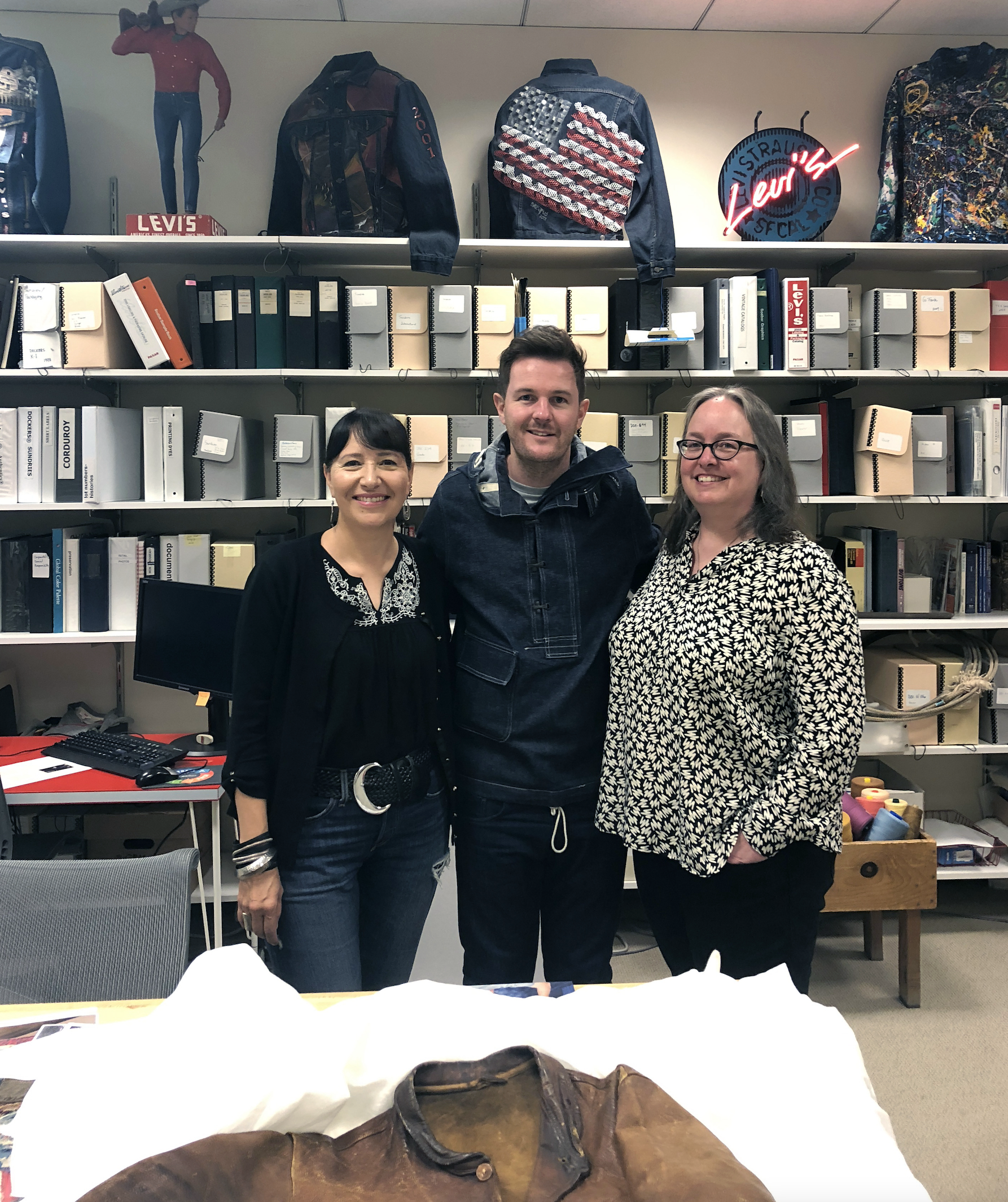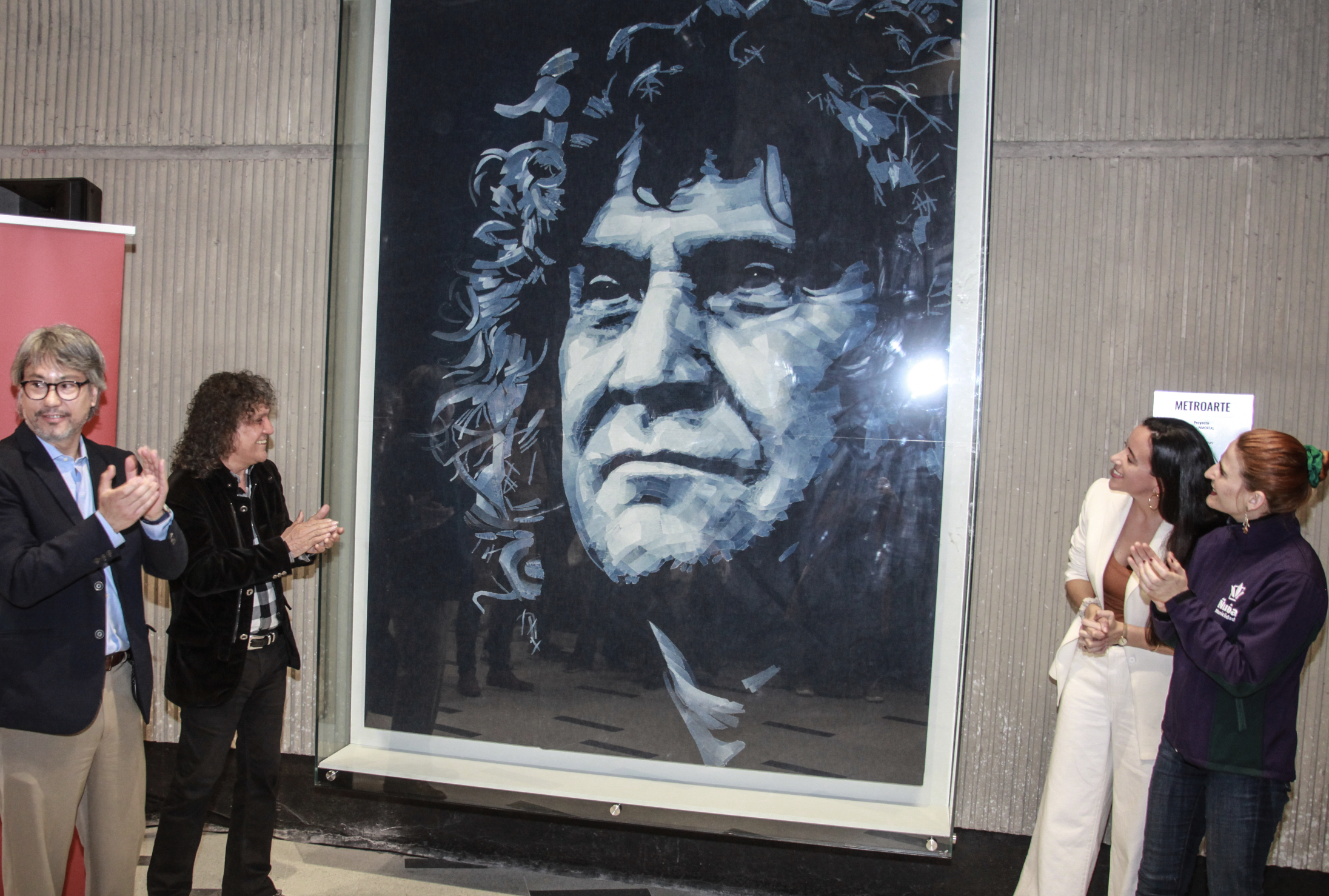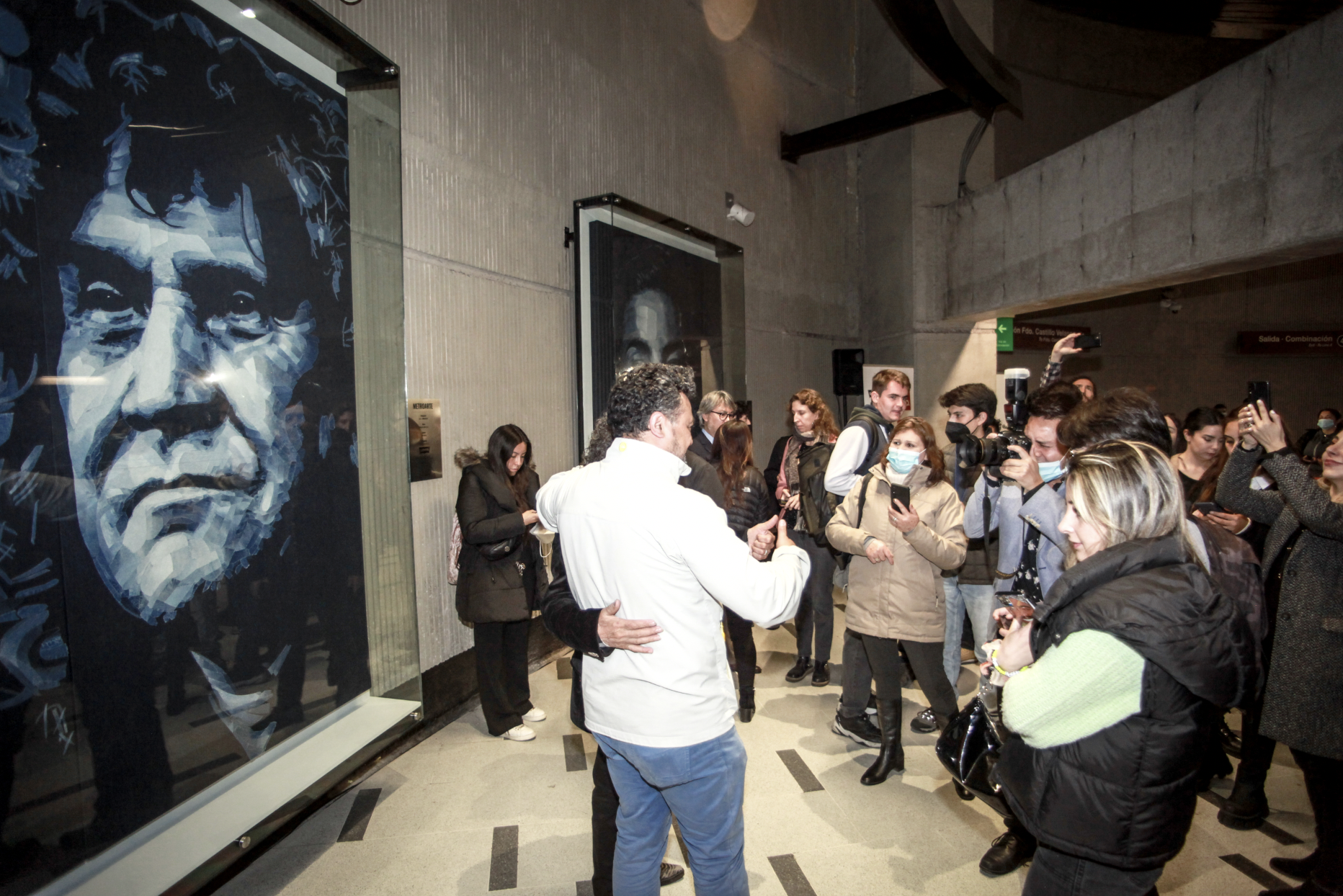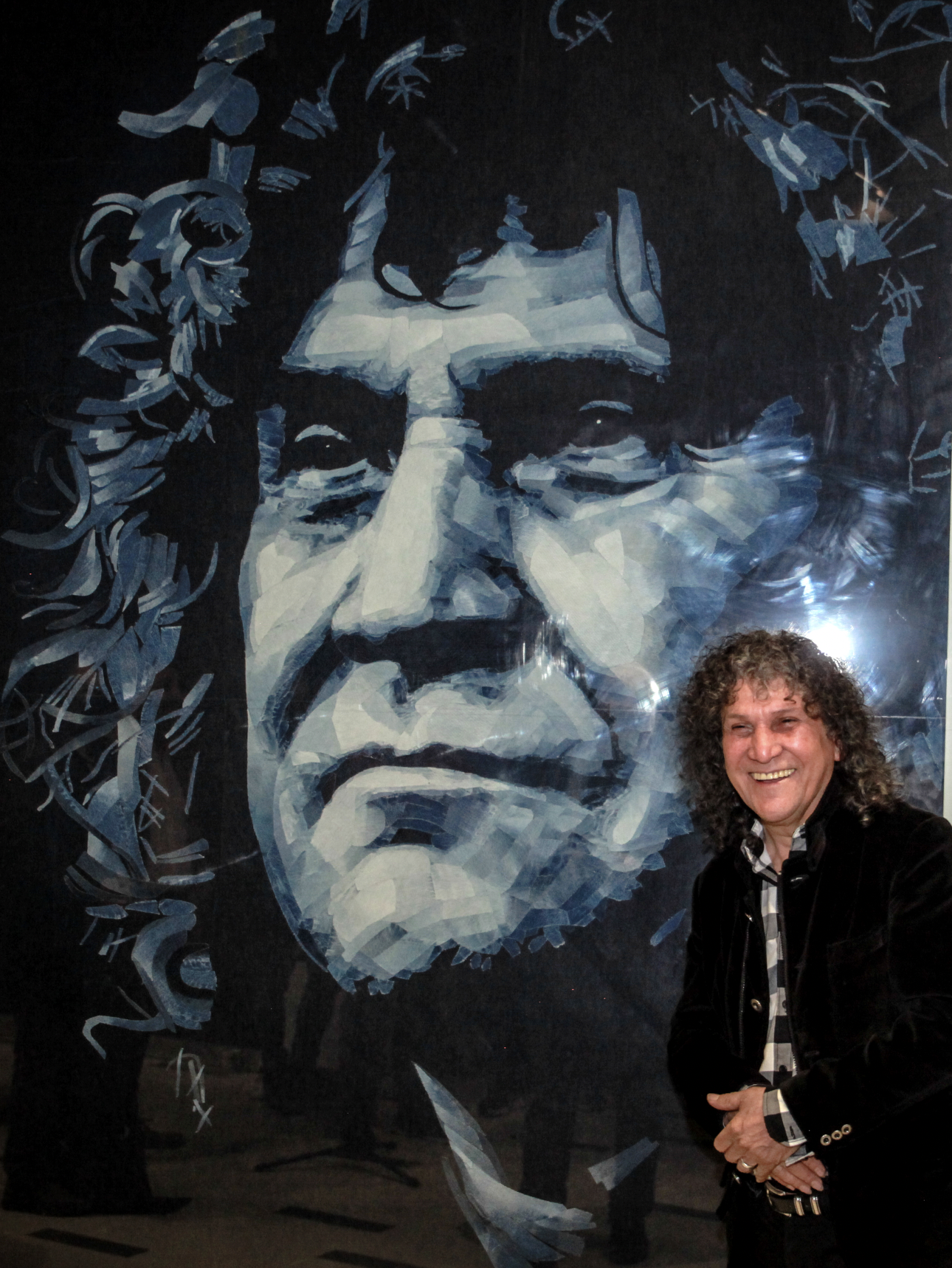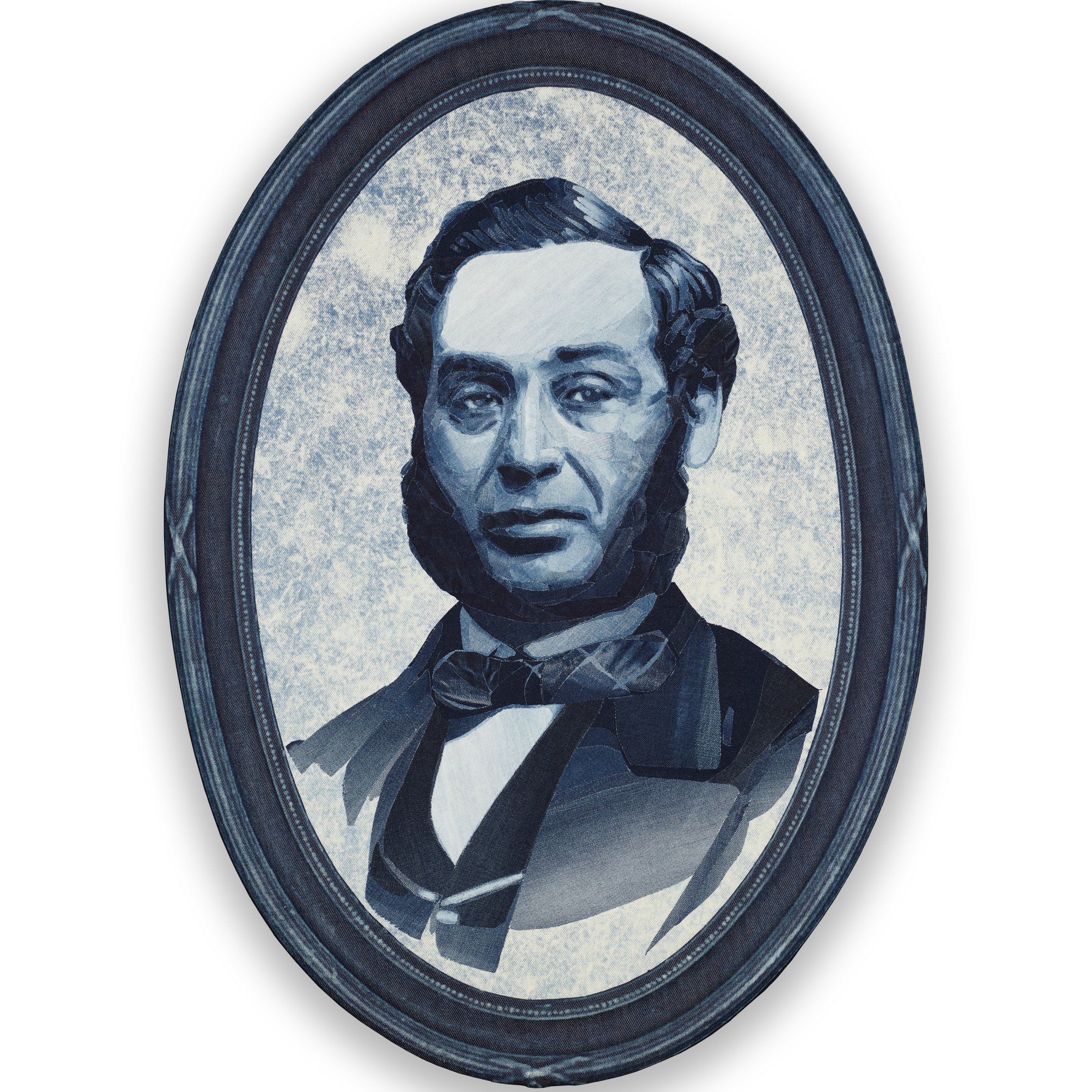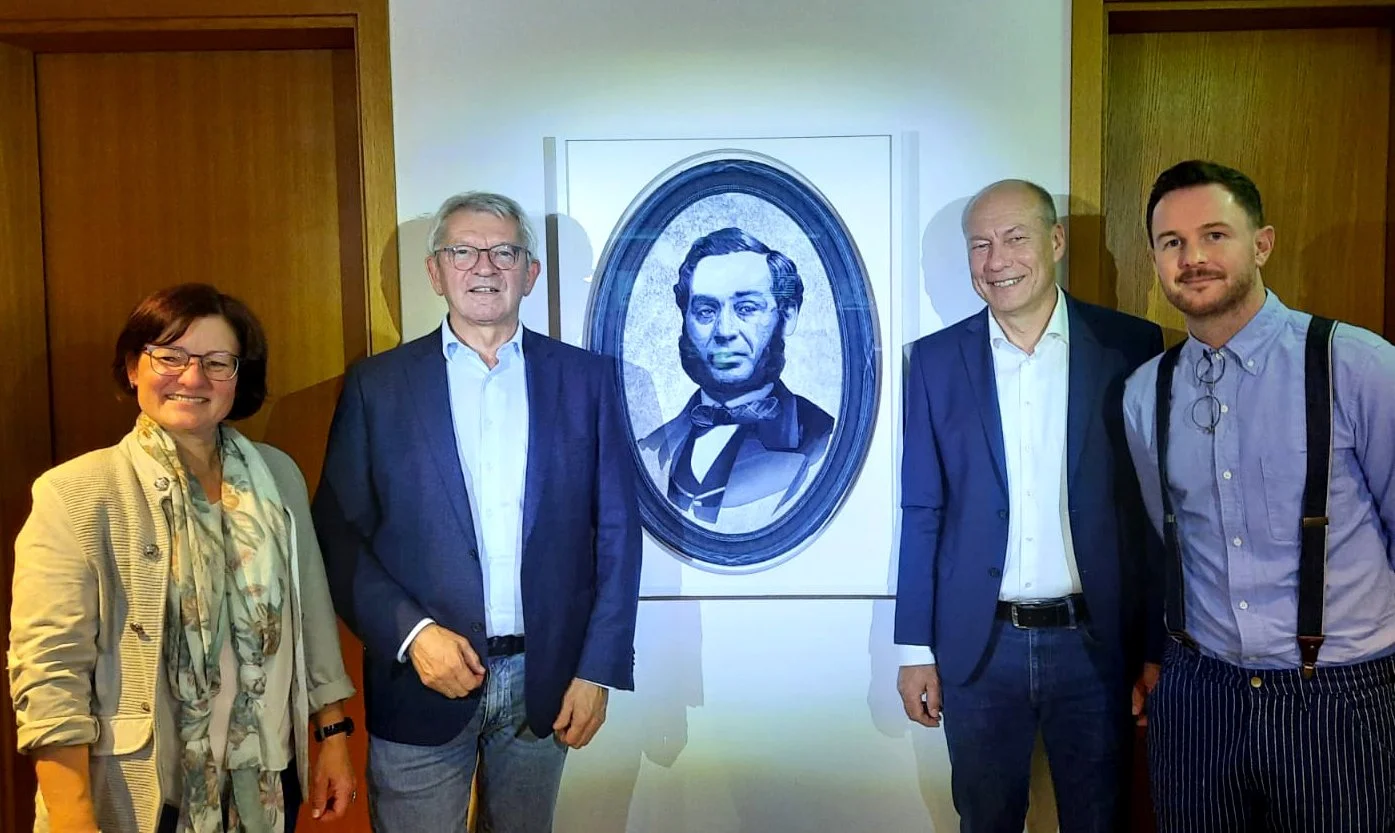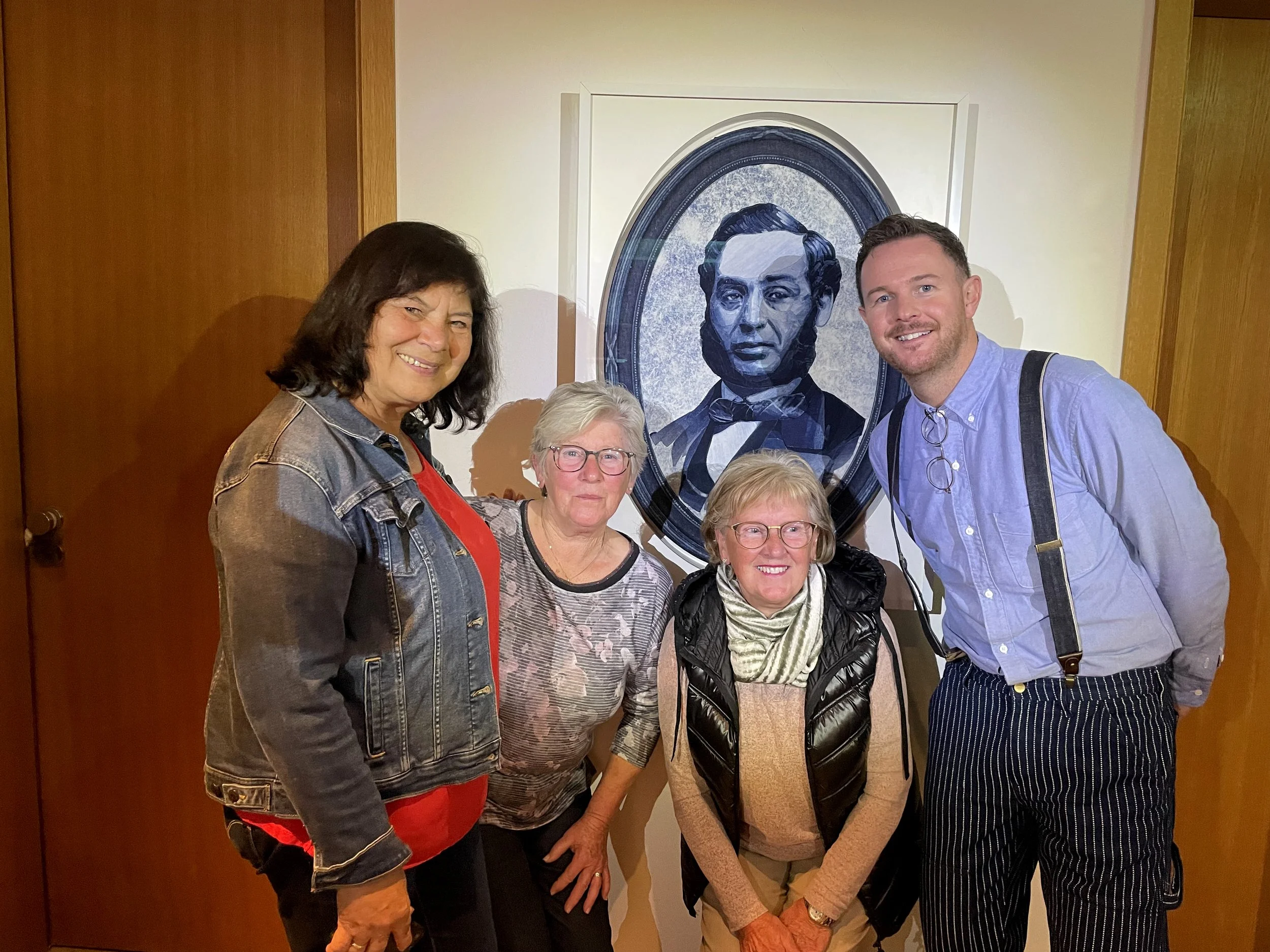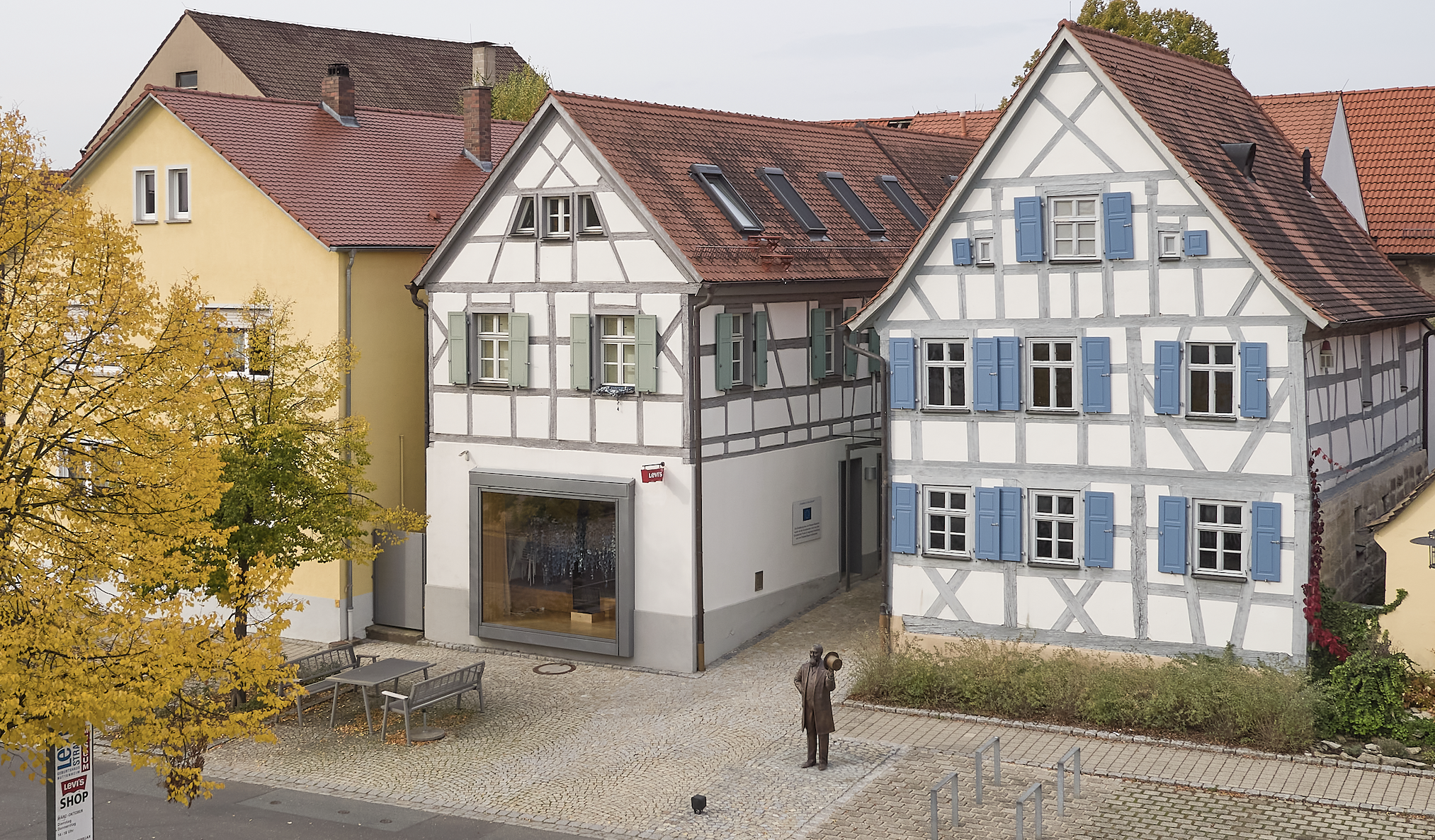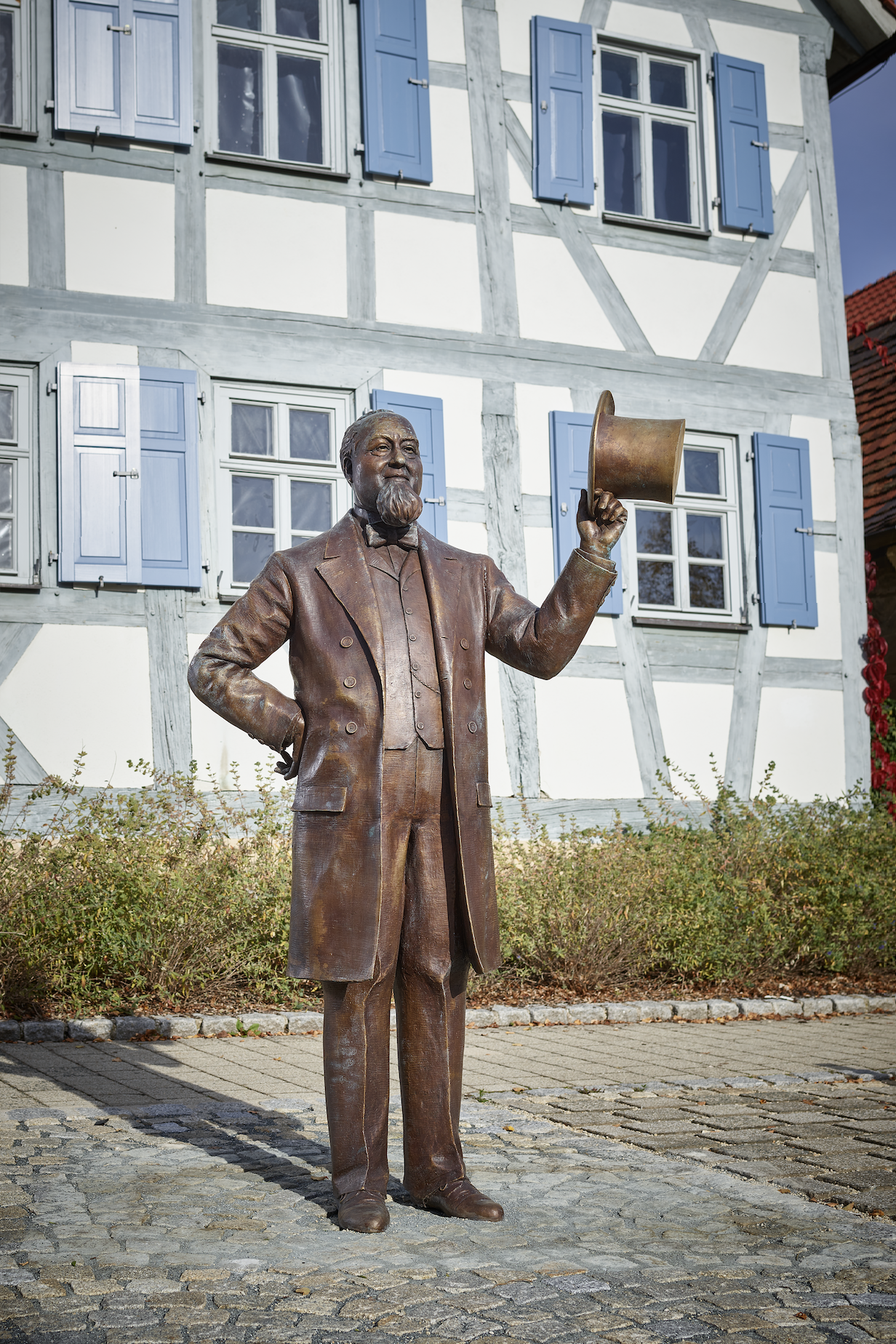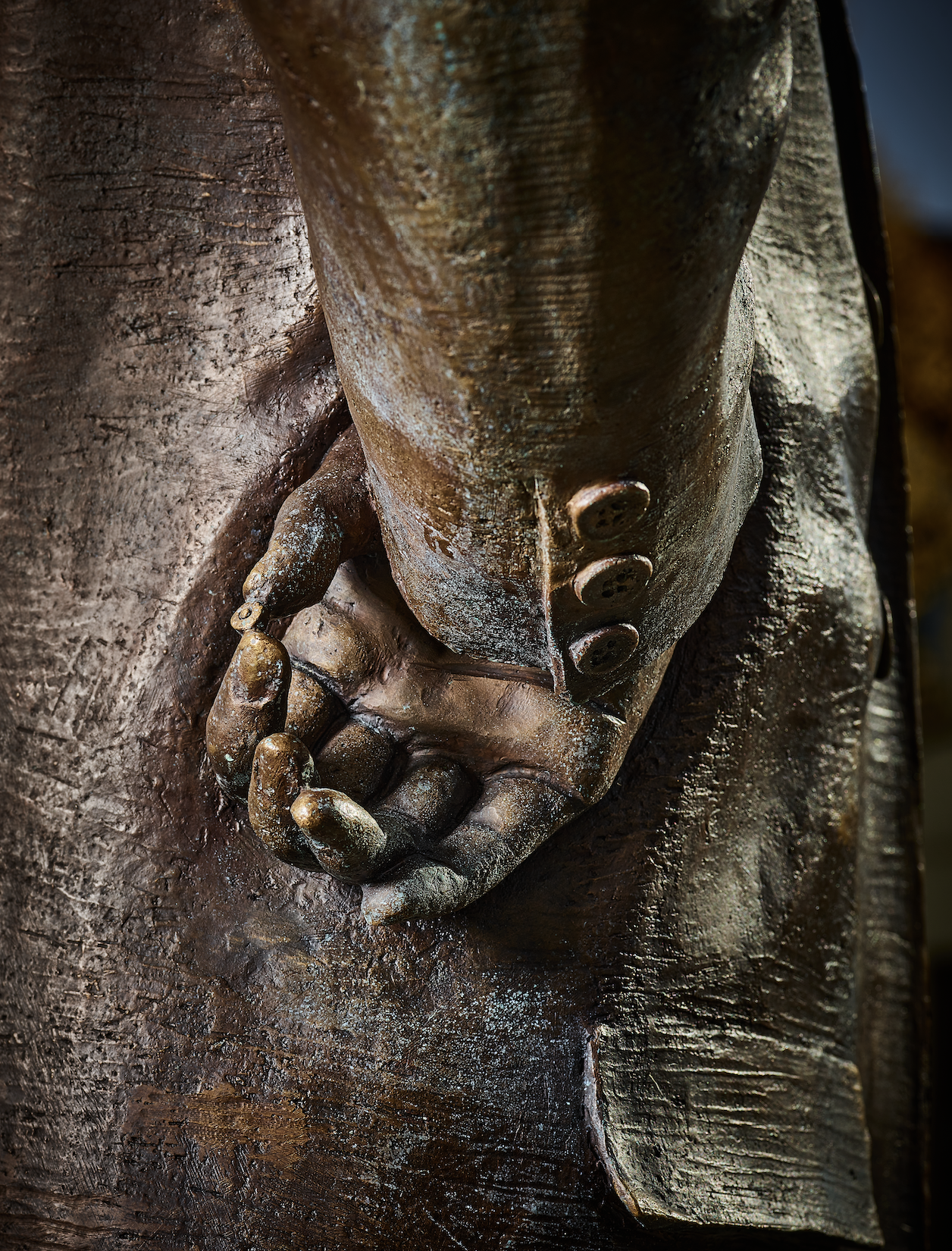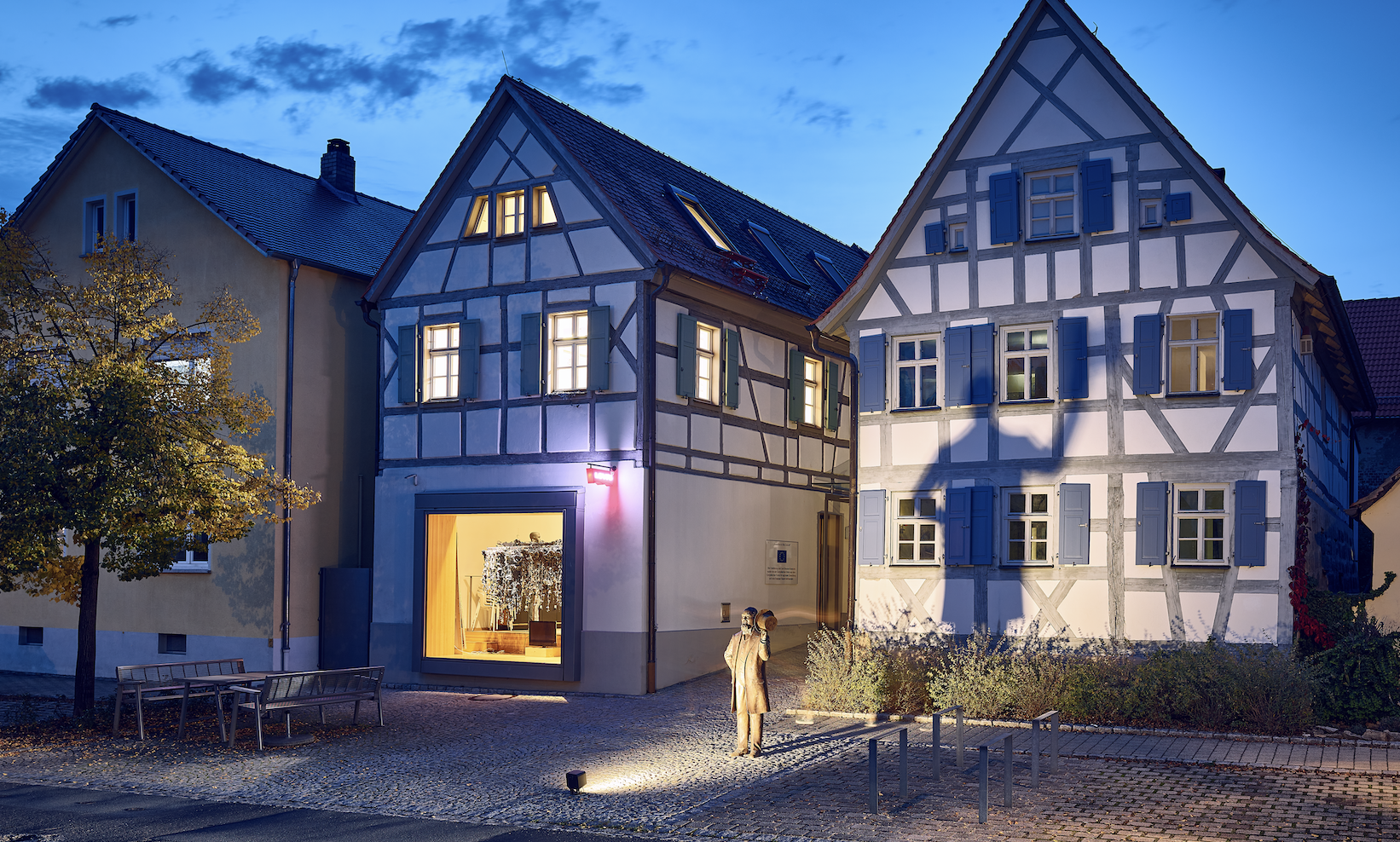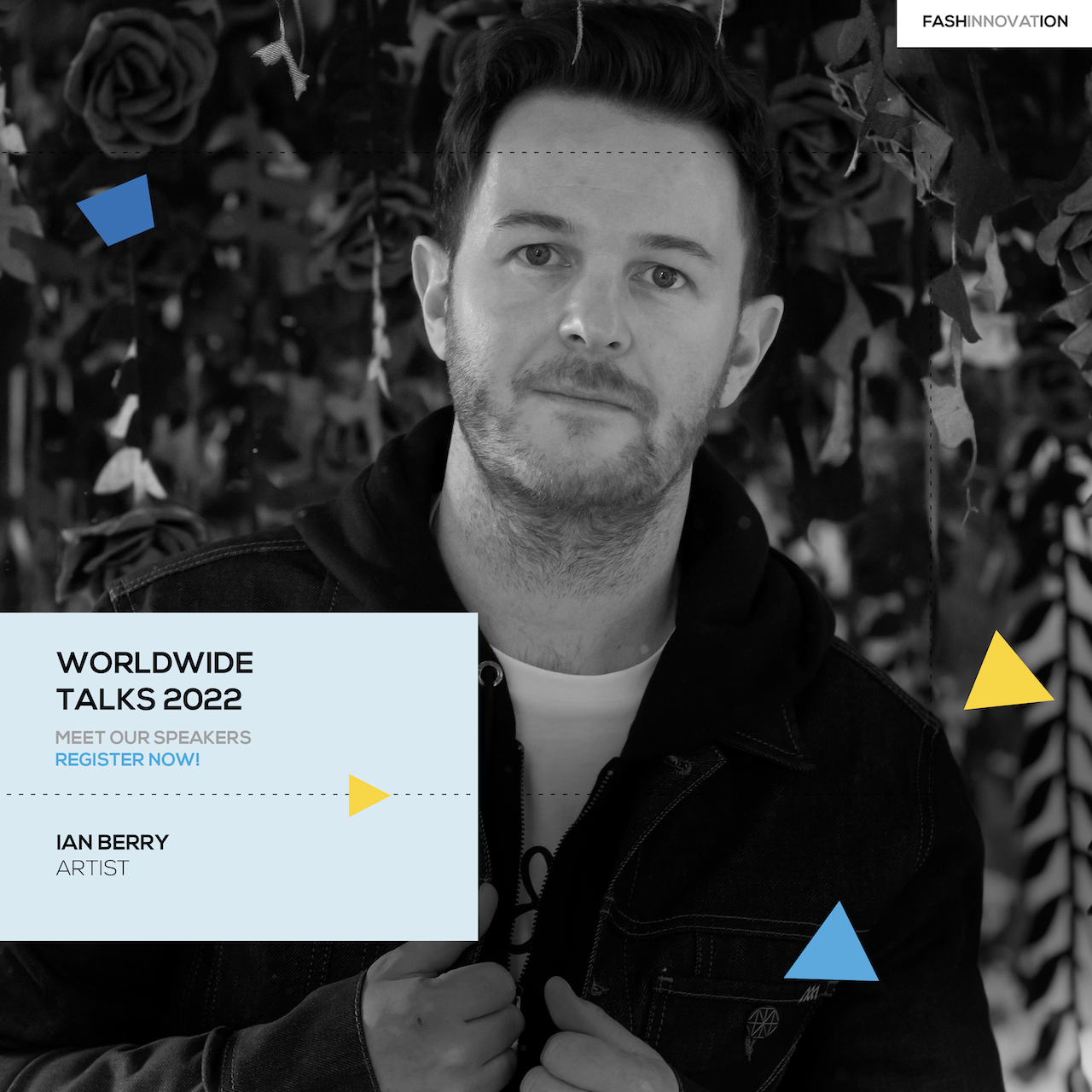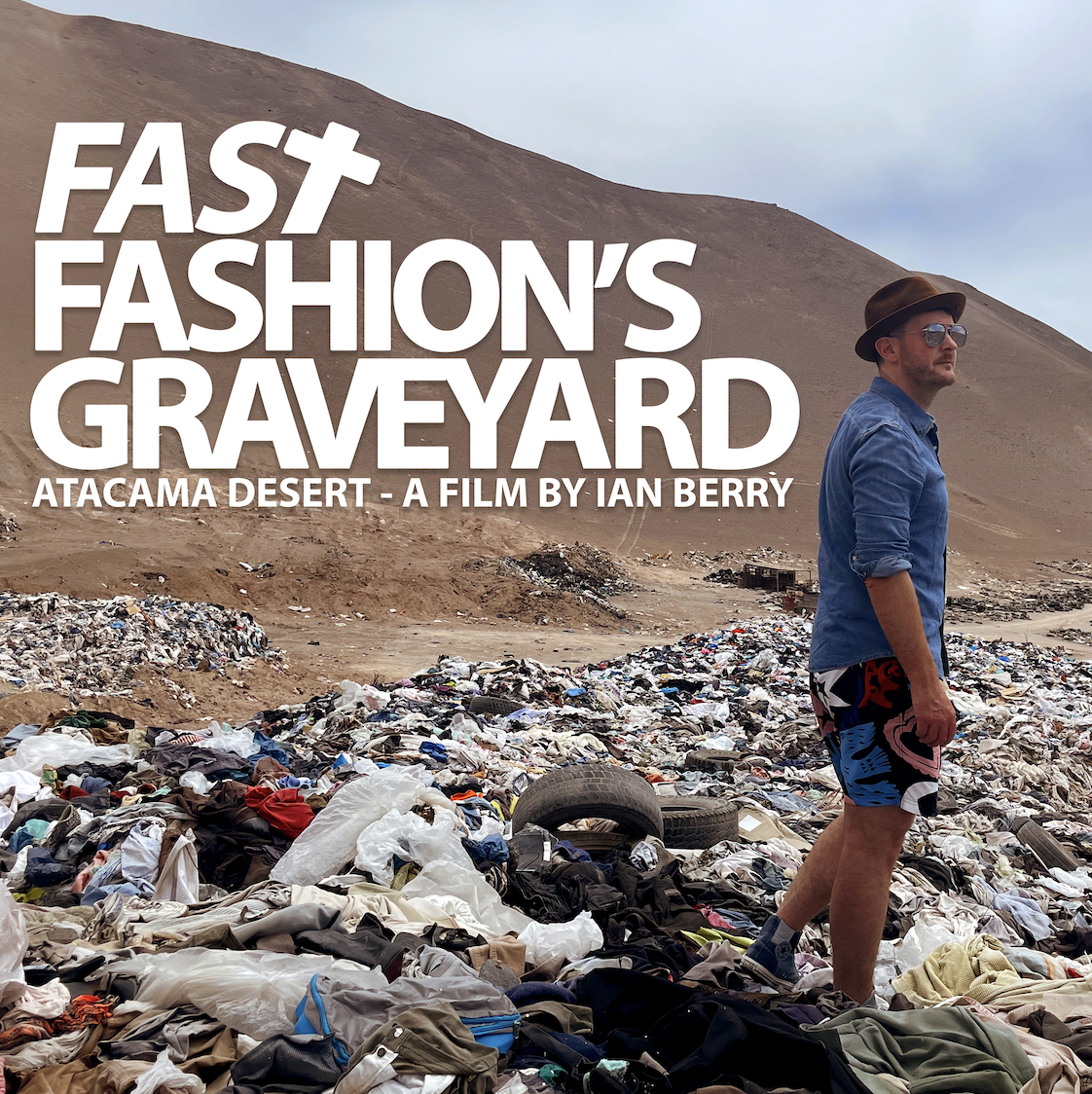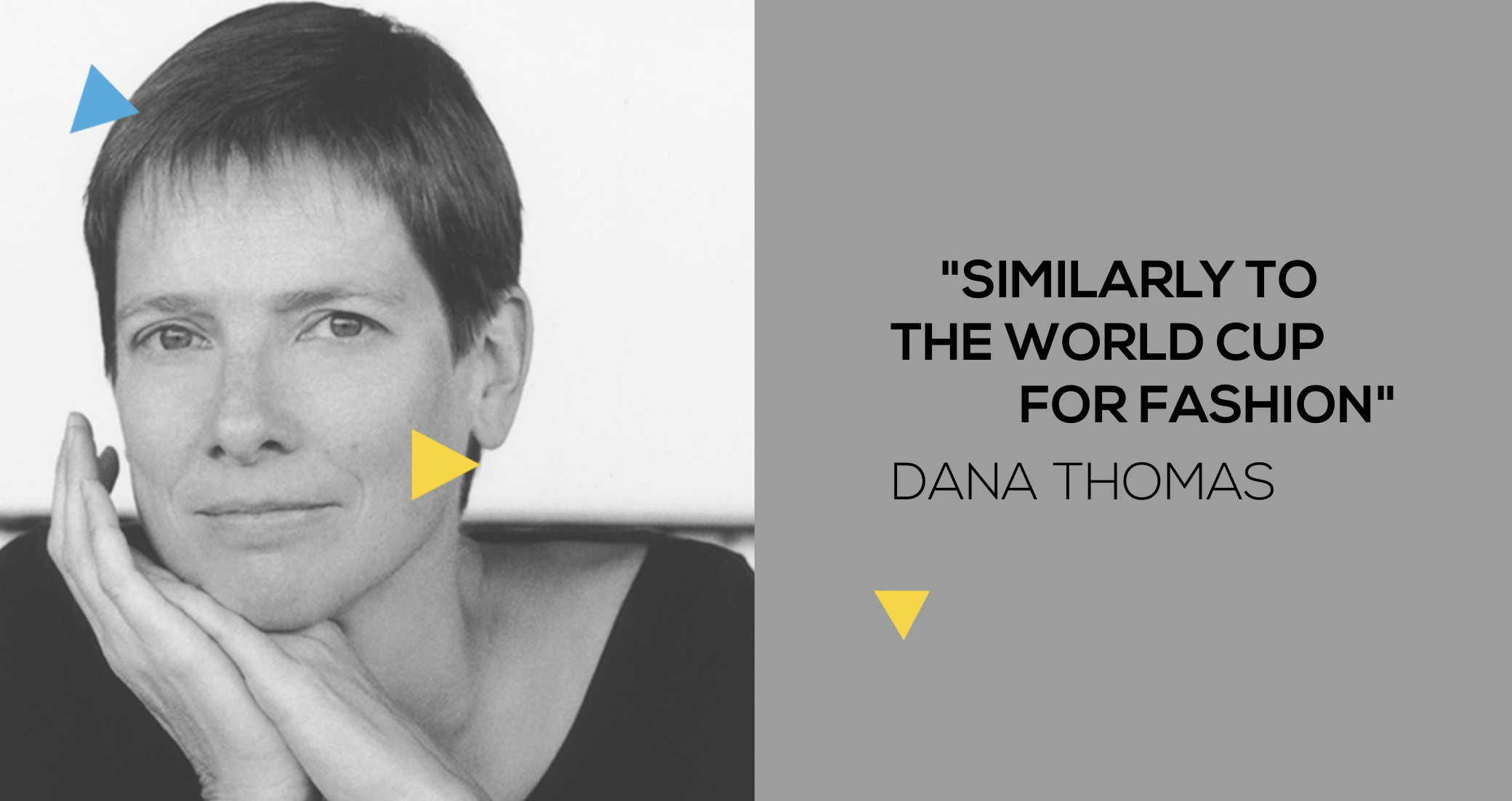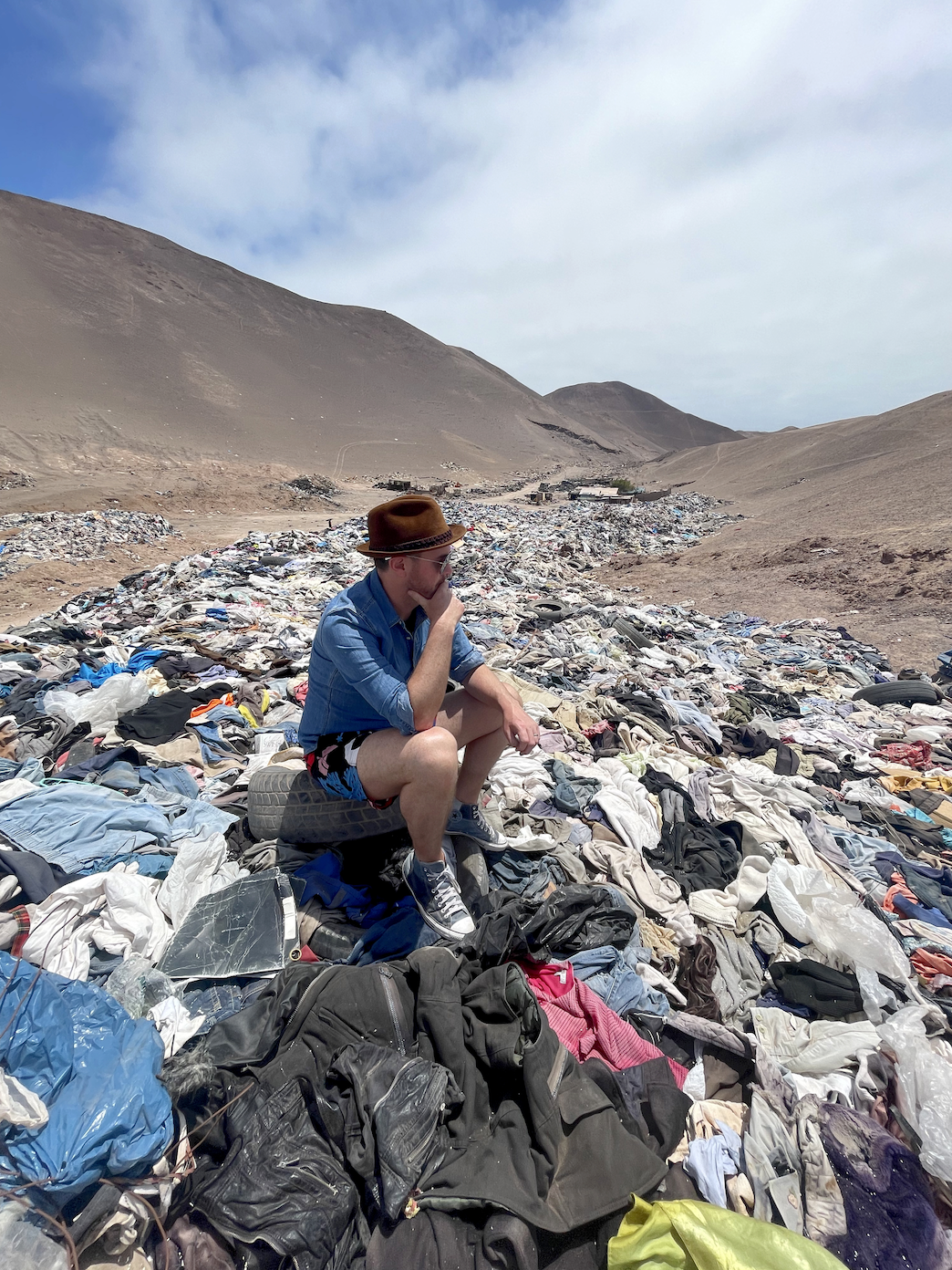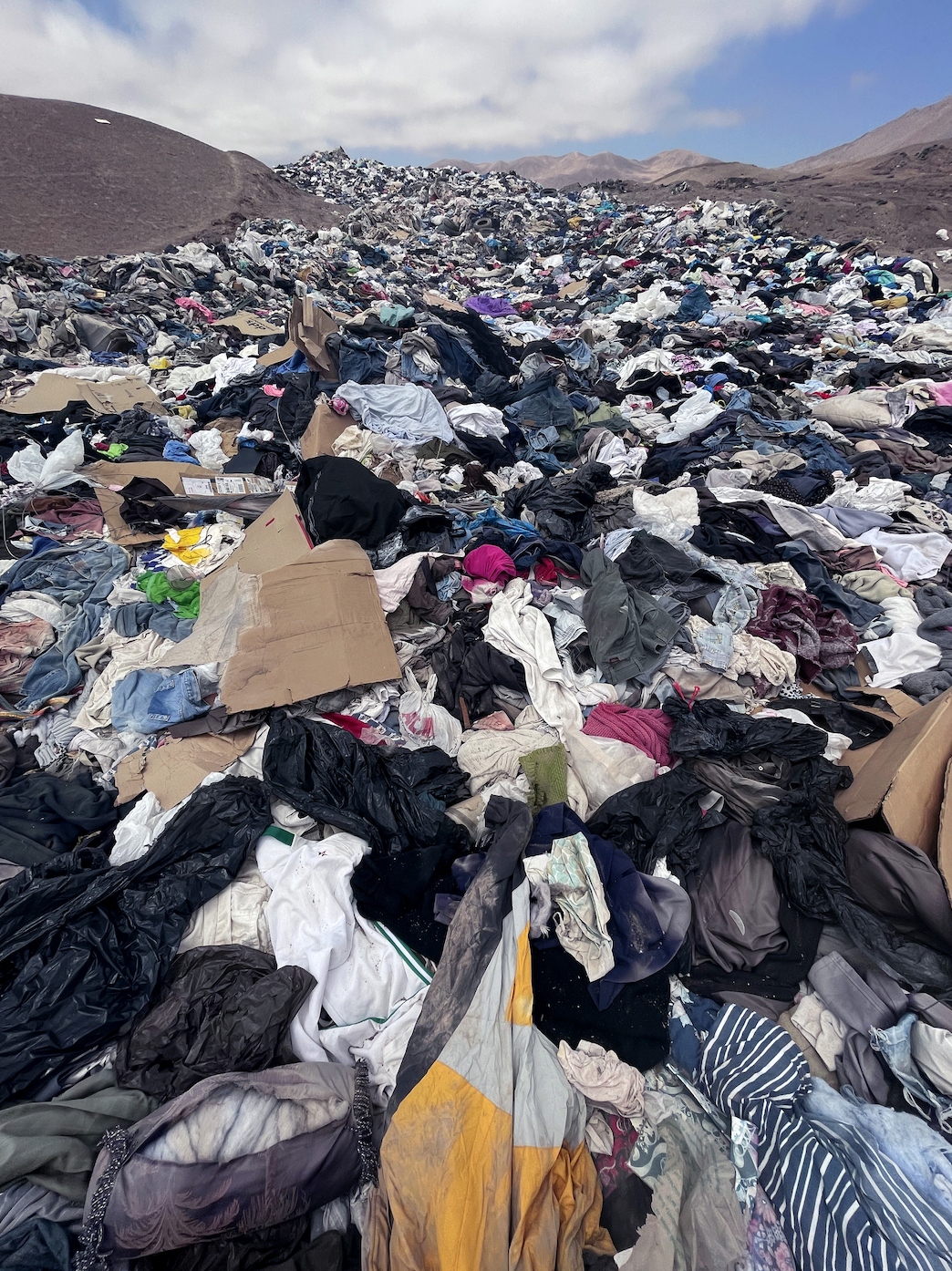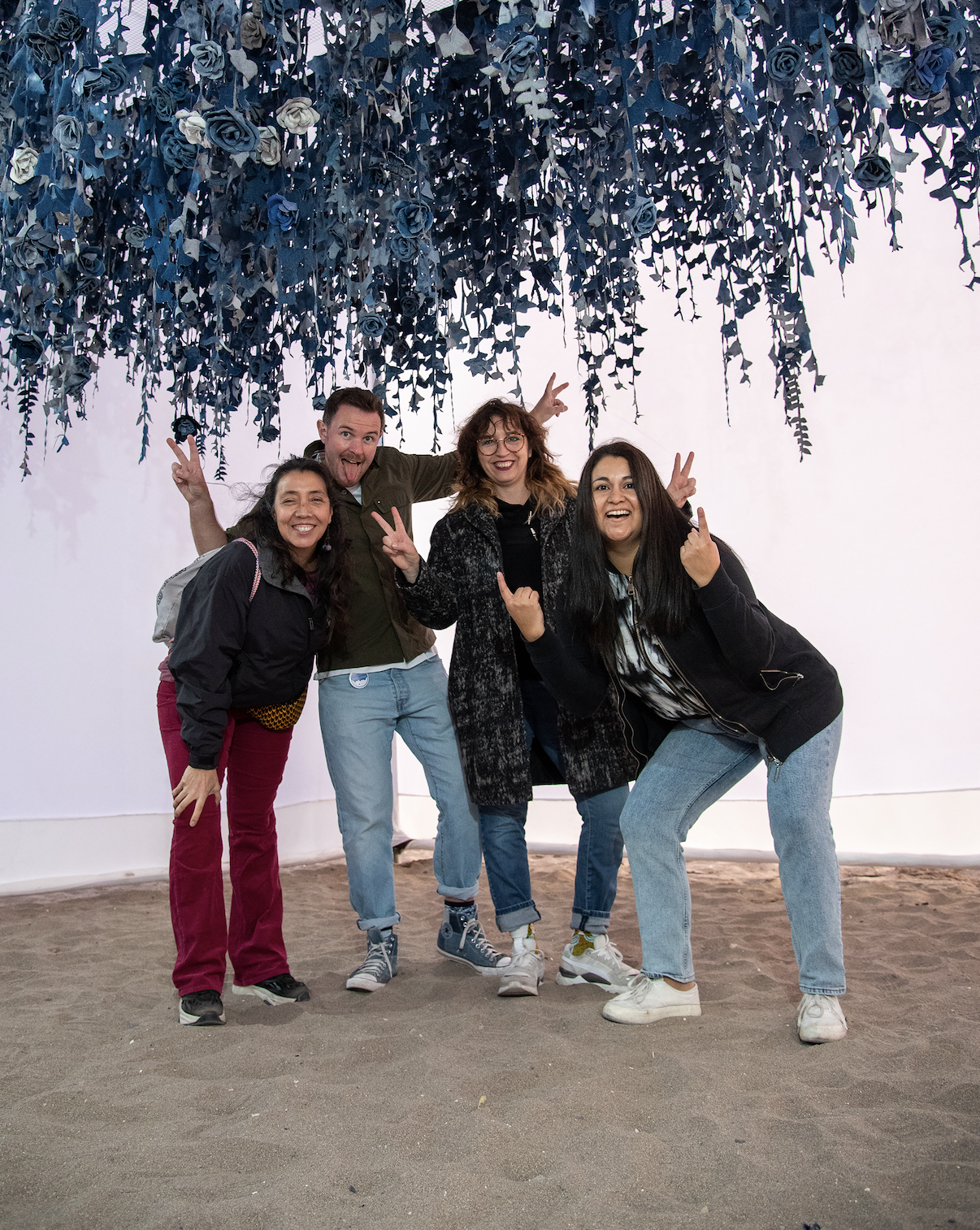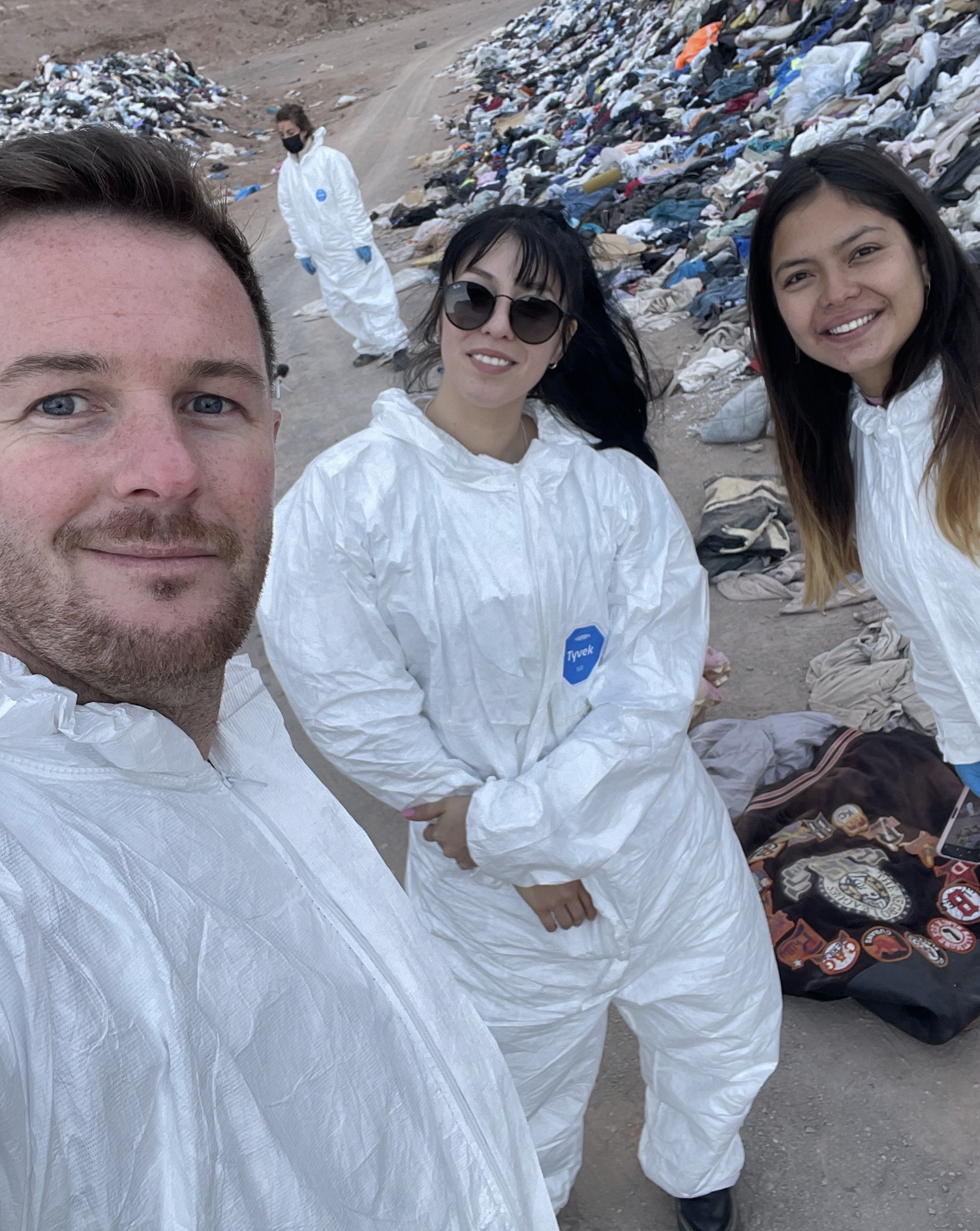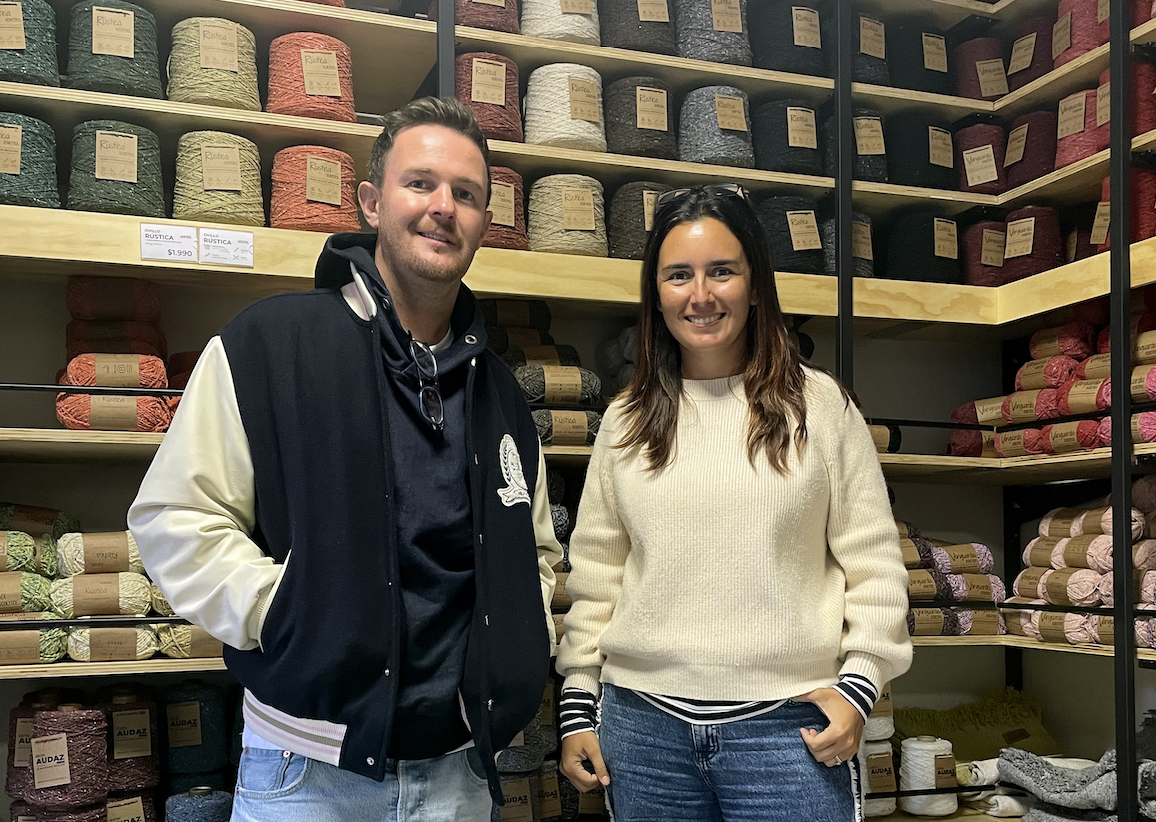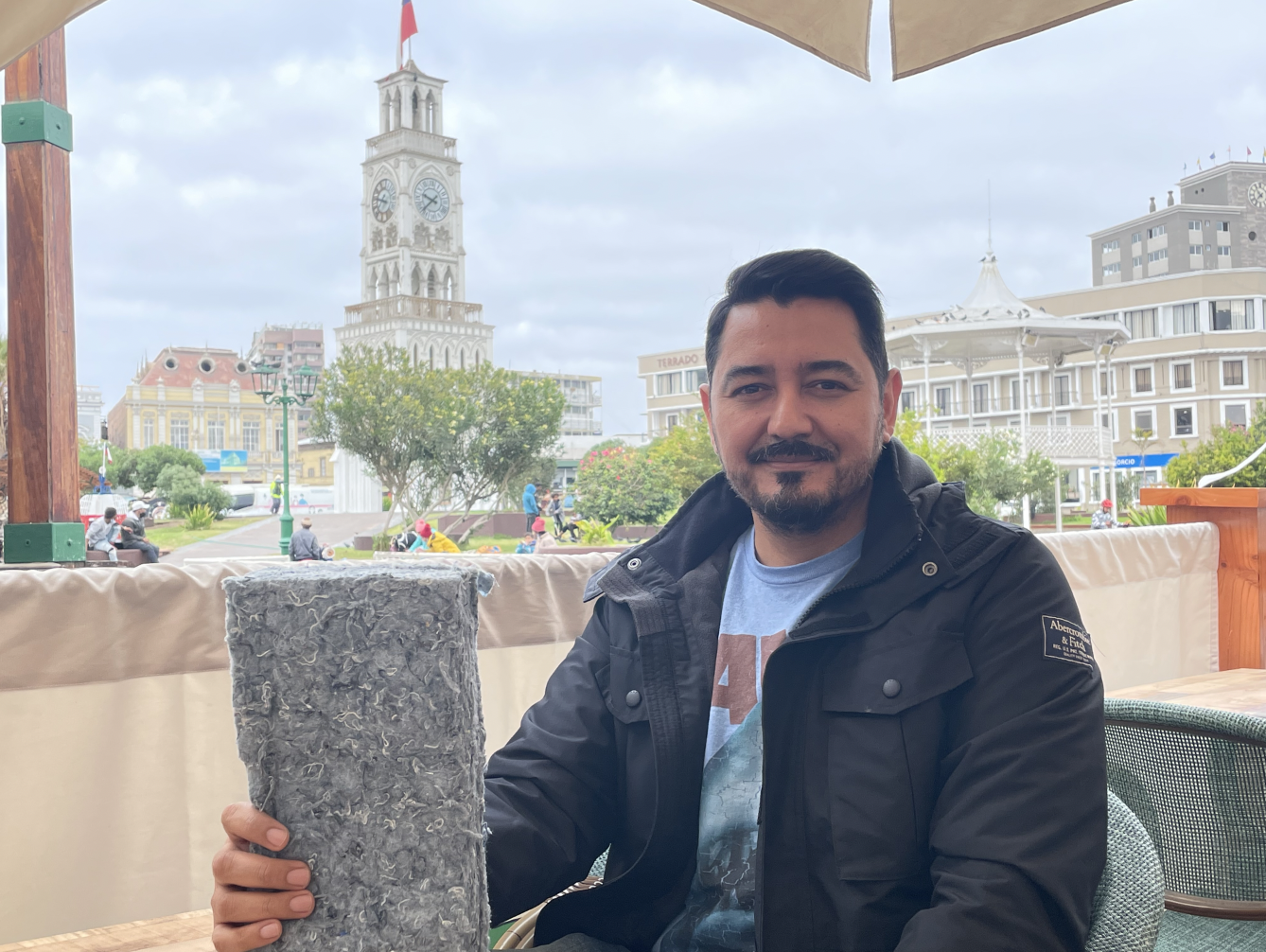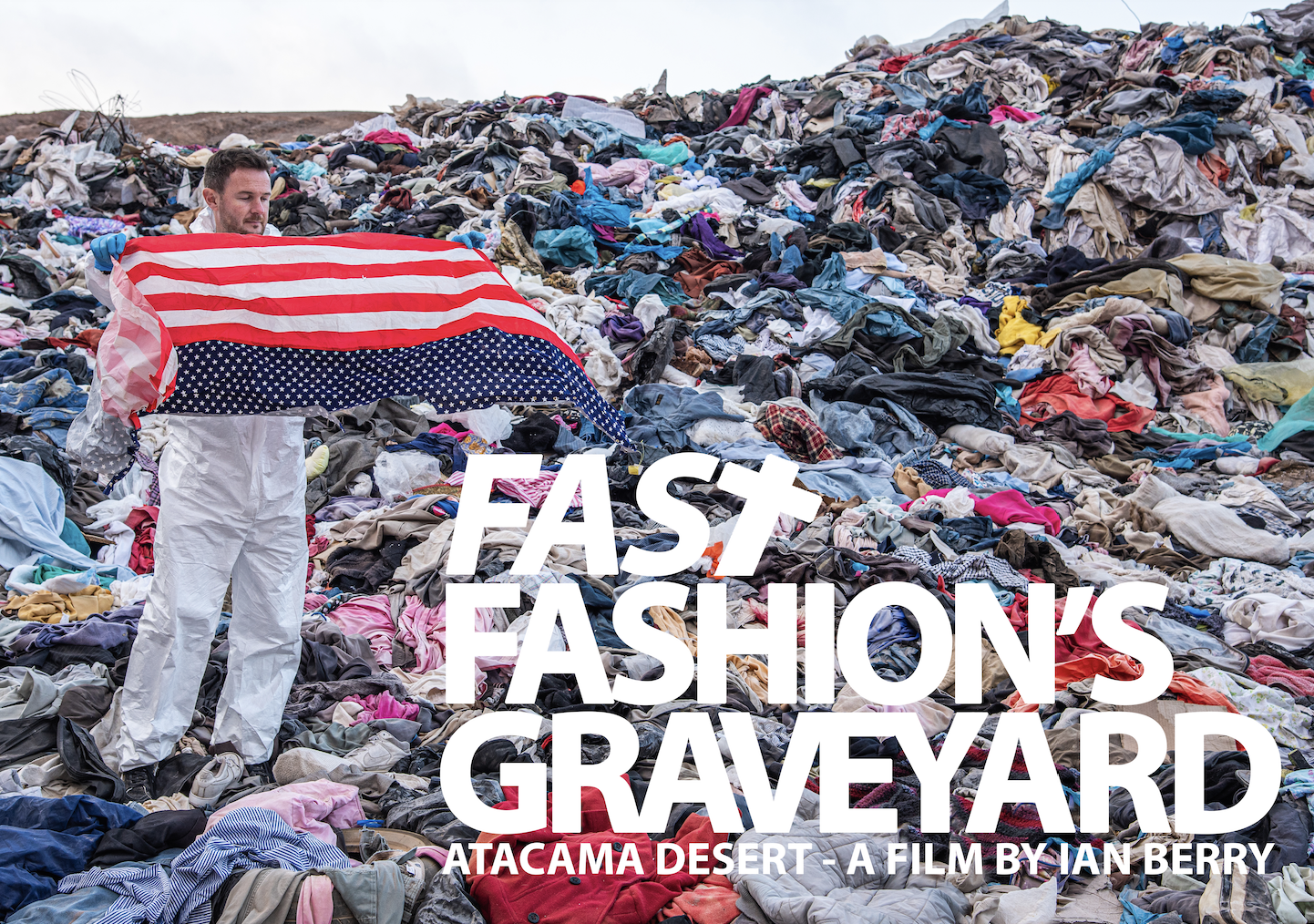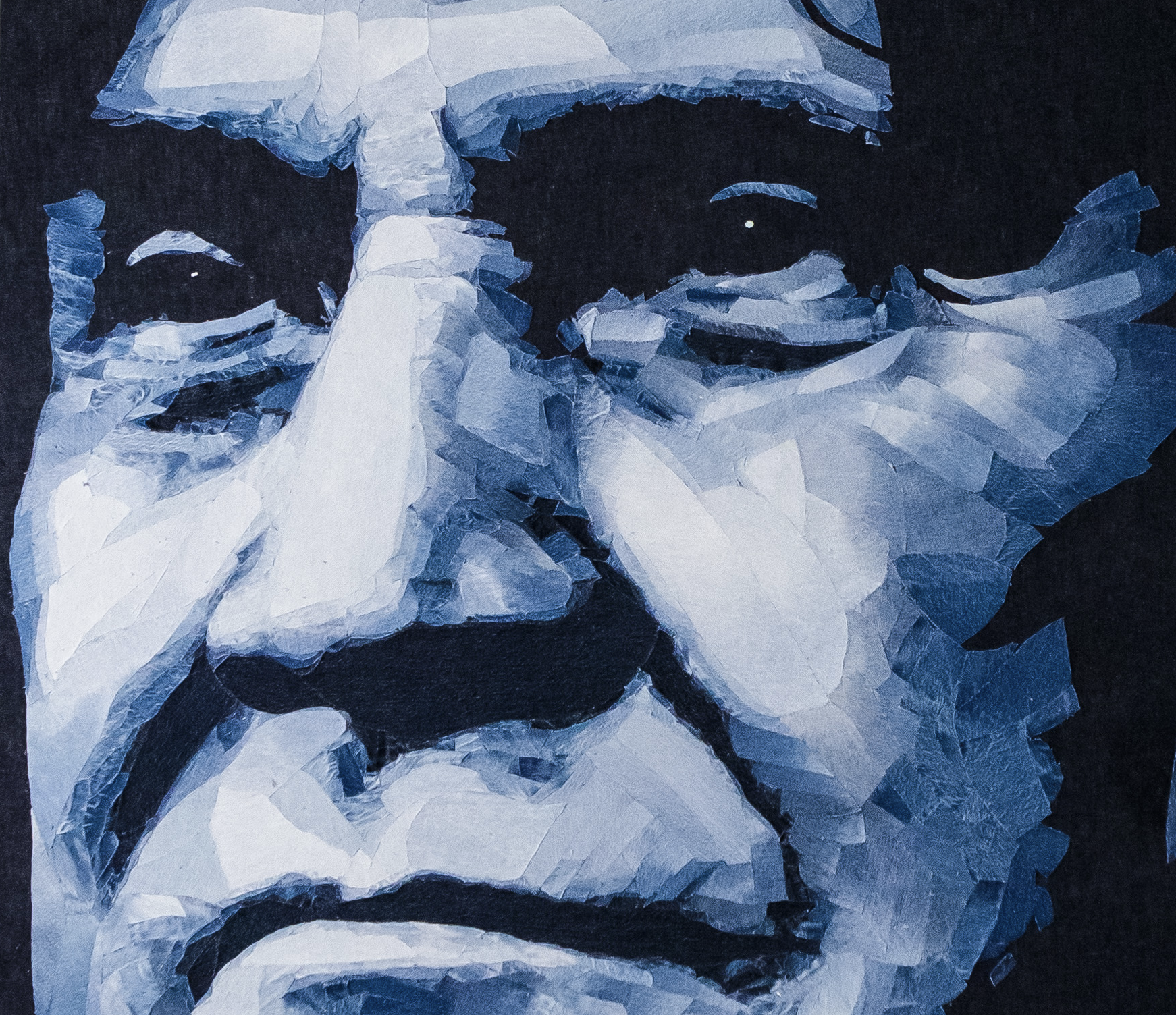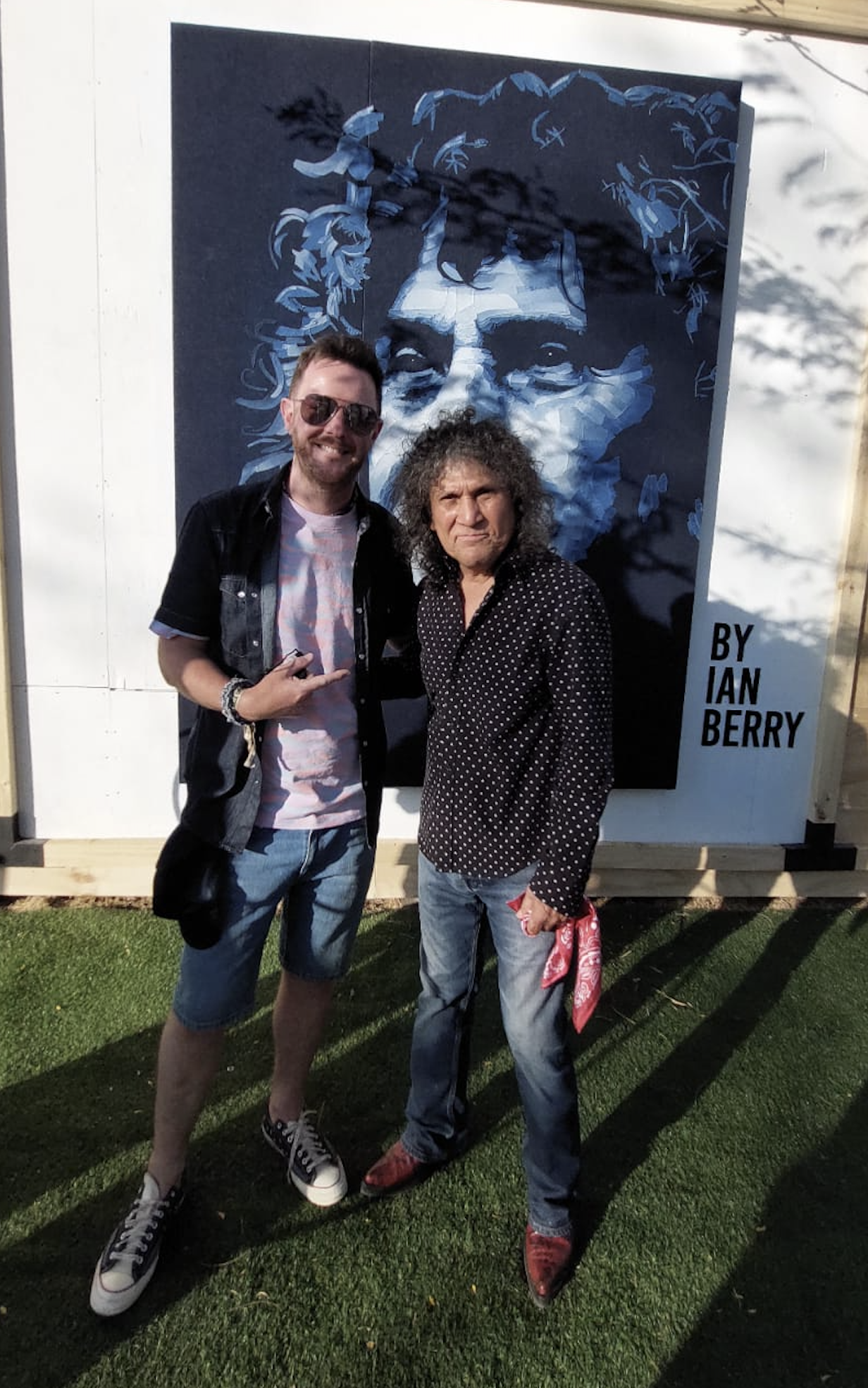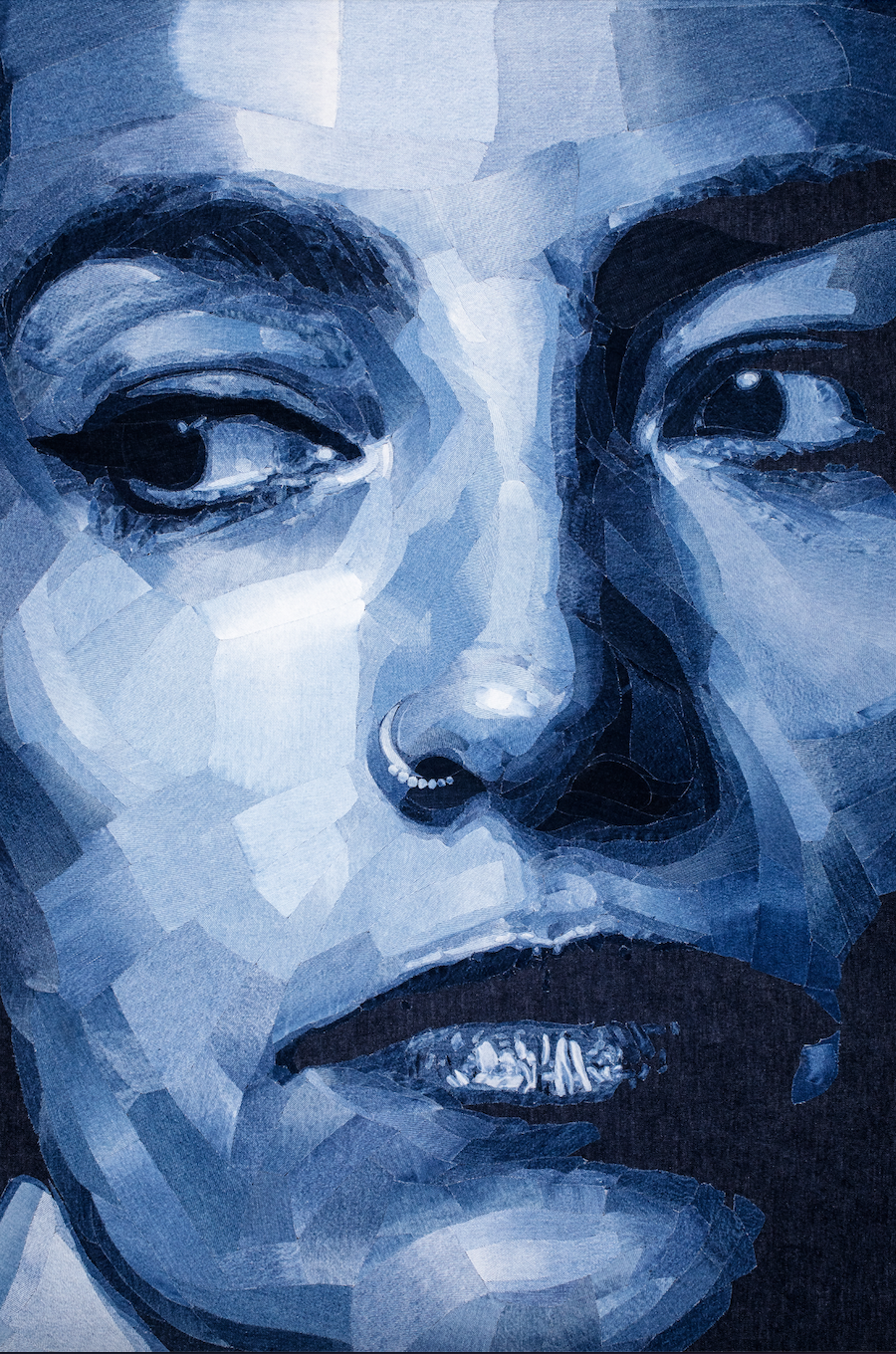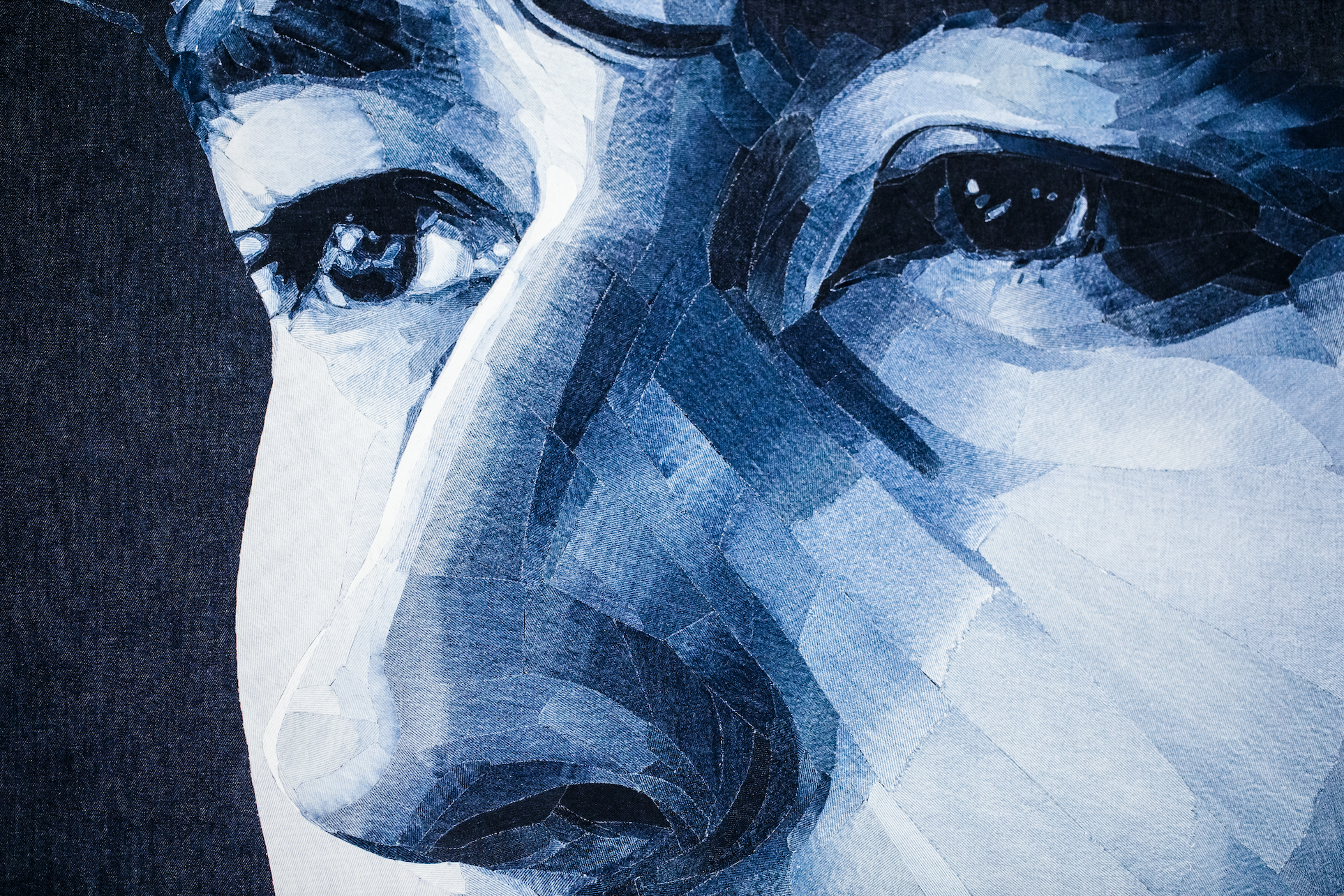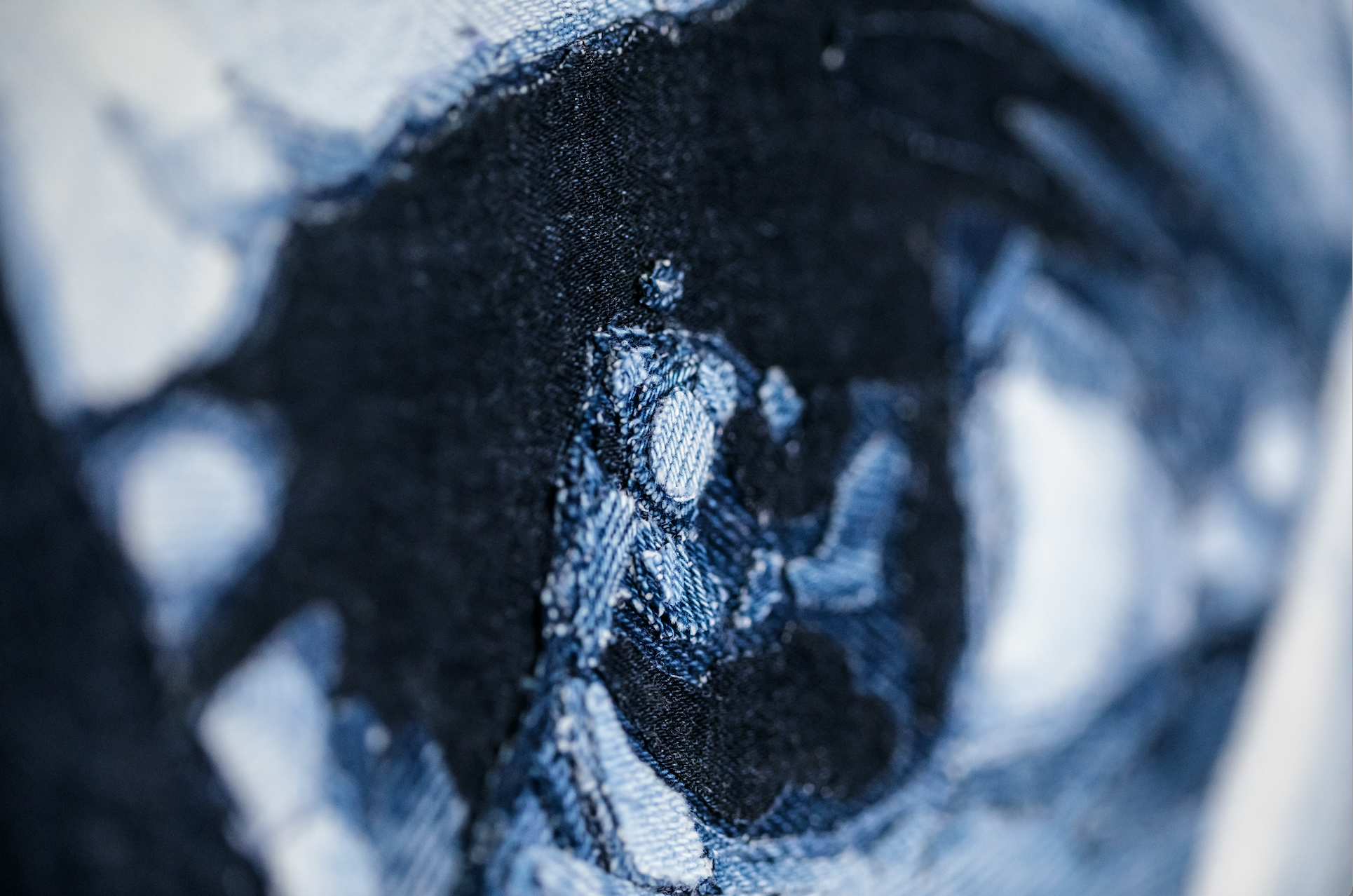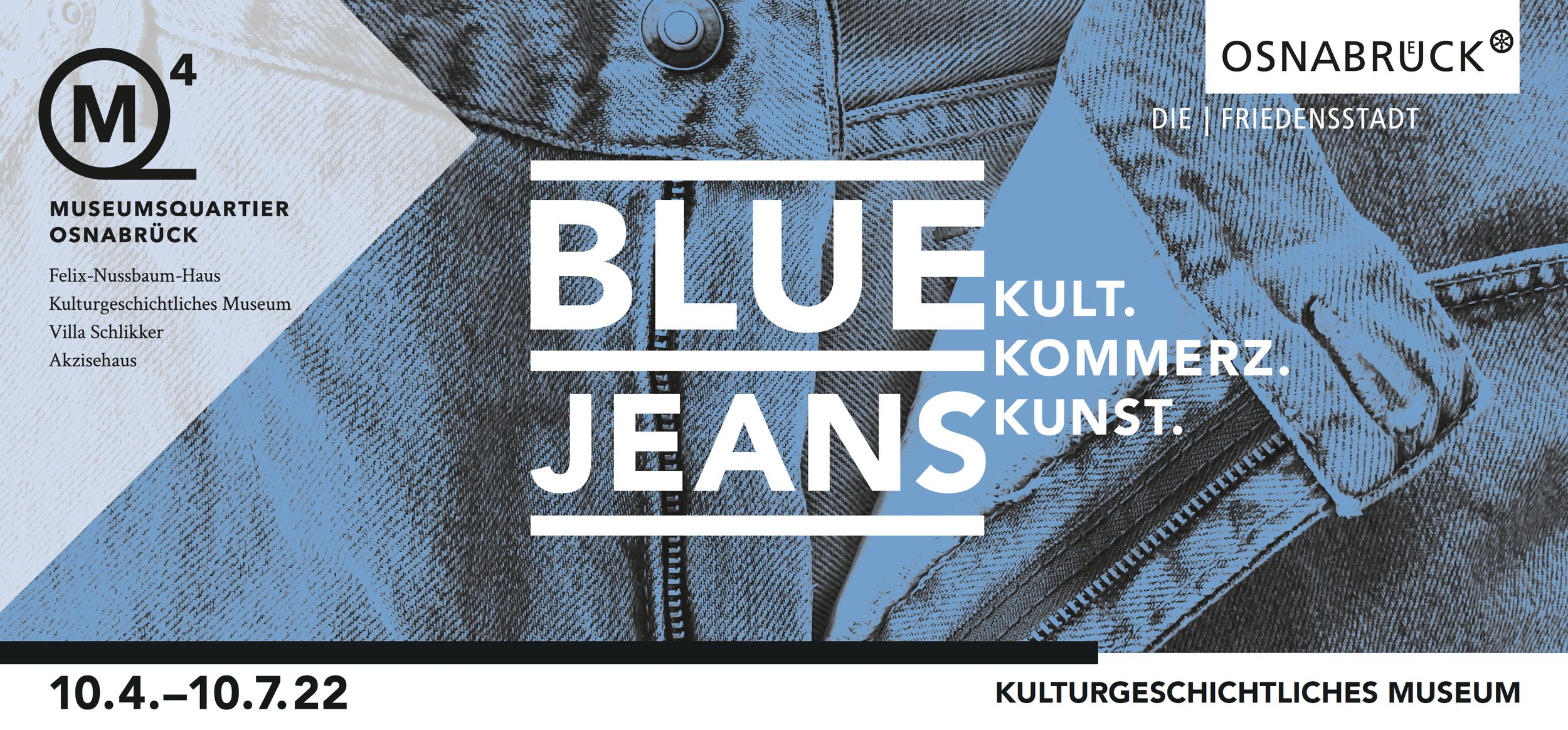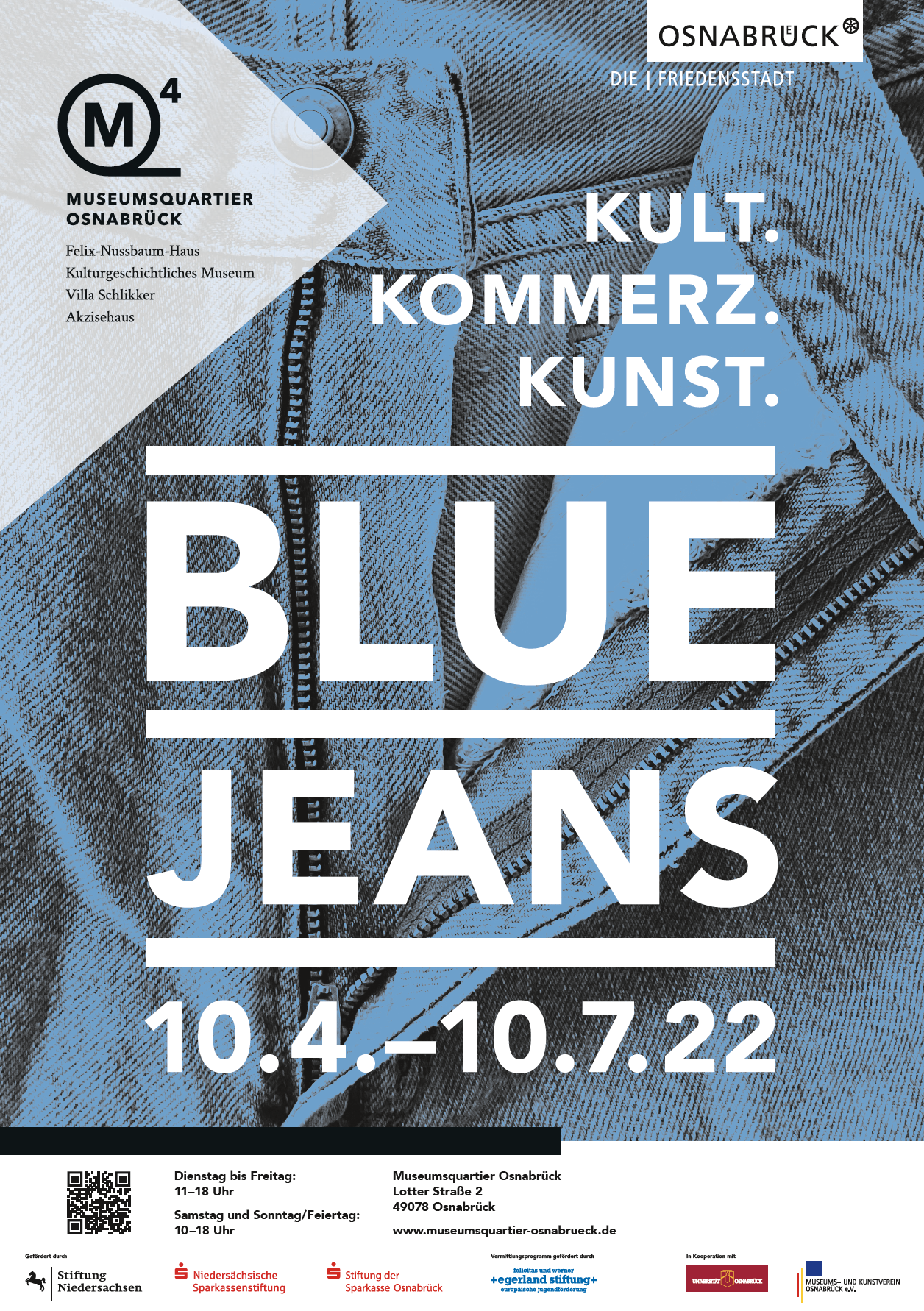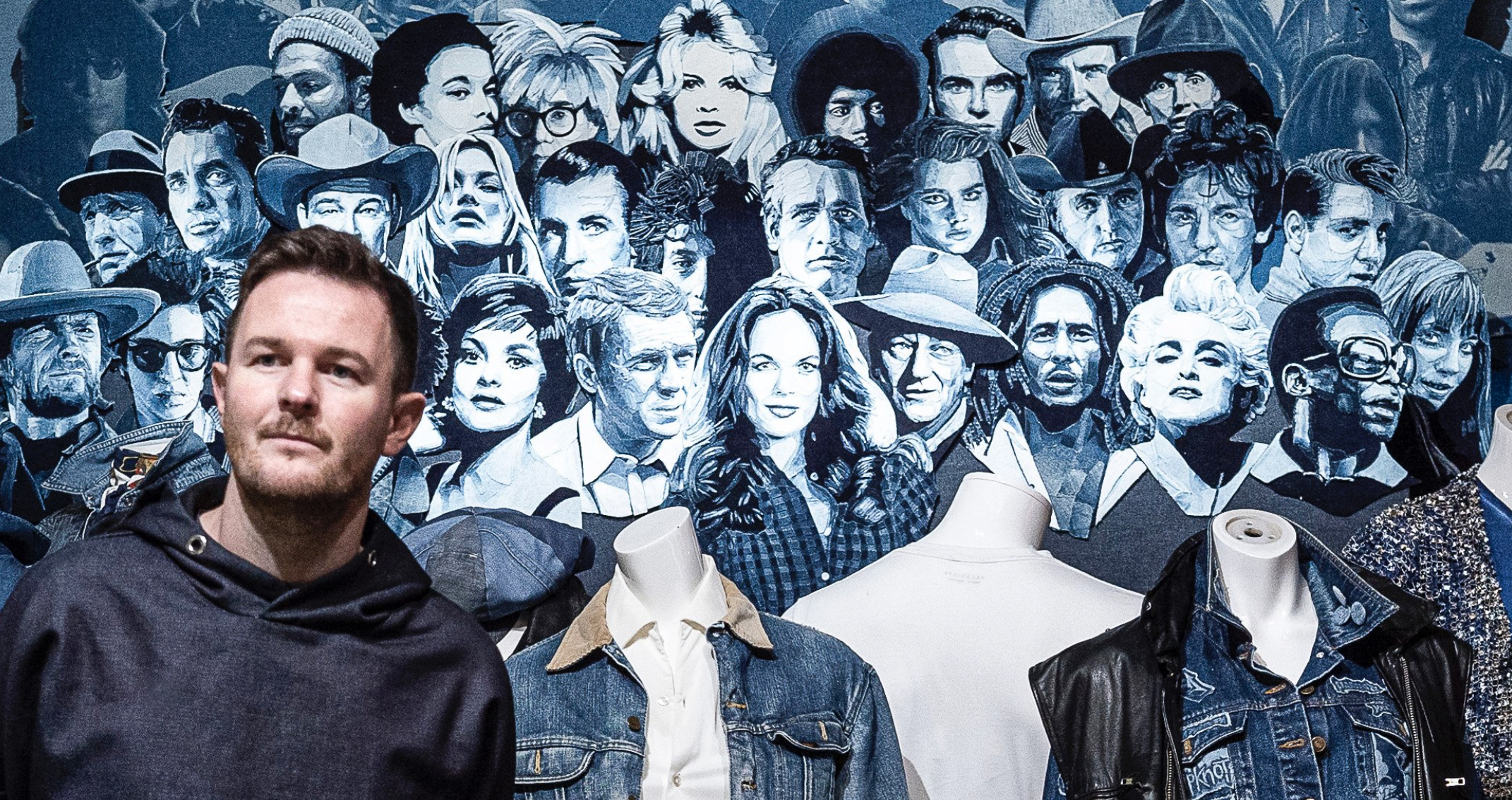German
BLUE JEANS
AUSSTELLUNG IM KULTURGESCHICHTLICHEN MUSEUM
10. APRIL – 10. JULI 2022
Der Eintritt zur Ausstellung ist am Eröffnungstag frei.
Bitte informieren Sie sich vor dem Besuch über unsere Internetseite, telefonisch unter 0541/323-2237 oder per E-Mail willkommen-mq4@osnabrueck.de über die aktuell geltenden Hygieneregeln.
Blue Jeans stehen seit mehr als 150 Jahren für ein Lebensgefühl von Freiheit und unkonventioneller Lässigkeit. Das Klischee vom ungebundenen Cowboy lebt noch genauso nach wie die Legende von der Revoluzzerhose der 68’er. Aber mit diesem Kleidungsstück verbindet sich inzwischen mehr als Kult und Nostalgie. An ihm lassen sich gesellschaftliche Geschichten des zweigeteilten Deutschlands, der 68er-Protestbewegung, der Frauenemanzipation, der Geschlechterstereotypen oder der Schwulenbewegung erzählen. Namhafte Künstler:innen haben die Blue Jeans in ihre Kunst integriert, haben deren Symbolkraft aufgegriffen, überspitzt dargestellt oder kritisch hinterfragt. Andere haben Entwürfe für die Jeanswerbung geliefert. Modegeschichte, Werbestrategien und Kunstpositionen lassen sich somit am Werdegang der Blue Jeans veranschaulichen.
Das Museumsquartier Osnabrück widmet diesem kulturgeschichtlichen Phänomen eine facettenreiche Ausstellung, in der Werke berühmter Künstler:innen wie Joseph Beuys, VALIE EXPORT, Wang Bing, Ian Berry u. w. die Blue Jeans in der Kunst zeigen und Themen wie Identität, Kultobjekte oder Produktion behandeln. In Kombination mit Fotografien, Film und Musik, mit Zeitungsartikeln und Zeitschriften, mit Jeans-Originalen und Designstücken taucht die Ausstellung in die Legenden und Geschichten rund um die Blue Jeans ein, lässt ihre Vielschichtigkeit erkennen sowie ihre identitätsstiftende Rolle reflektieren.
Mit der Karriere der Blue Jeans von der Arbeiterhose zum allgegenwärtigen Kleidungsstück kommen auch die Schattenseiten eines Massenartikels zum Tragen: die Massenproduktion und ihre Folgen für Mensch und Umwelt. Die Produktion der Blue Jeans gilt als eine der schädlichsten in der Textilindustrie. Seit einigen Jahren suchen umweltbewusste Produzenten nach nachhaltigen Alternativen, sowohl beim Einsatz von Rohstoffen als auch bei der Nachbehandlung der Hosen. Studierende der Universität Osnabrück haben im Wintersemester 2021/2022 die Schattenseiten, Nachhaltigkeitssiegel, Innovationen und Möglichkeiten der Wiederverwendung recherchiert. Ihre Ergebnisse fassen sie für den Ausstellungsteil „Produktion und Nachhaltigkeit“ zusammen und machen das Thema mit Exponaten und partizipativen Elementen zugänglich.
Im umfangreichen Rahmenprogramm zur Ausstellung können in Upcycling-Workshops eigene Jeanskreationen entworfen oder in Jeans-Tausch-Börsen Alternativen zur Wegwerfmentalität wahrgenommen werden.
Fragen der Zukunftsgestaltung zu Ressourcenverbrauch und Nachhaltigkeit, zu Individualität und Konformität können in dem vielfältigen Vermittlungsprogramm diskutiert werden.
Hierin erklärt Ninke Bloemberg (Fashion Curator, Centraal Museum, Utrecht) am Beispiel Alter Meister, warum Levi Strauss die Blue Jeans nicht erfunden hat. Ruedi Karrer, Direktor des weltweit einzigen, markenunabhängigen Jeansmuseums in Zürich illustriert mit Hilfe einiger Prunkstücke seiner Jeans-Kollektion, was einen echten Blue Jeans-Fan ausmacht, warum Blue Jeans nicht gewaschen werden sollten und woran Plagiate zu erkennen sind. Carl Tillessen (Trendanalyst, Autor, Designer und Dozent) spricht über die Blue Jeans als Dauerbrenner in der Mode und Thomas Rau (Architekt & Visionär) über seine bahnbrechenden Konzepte für Nachhaltigkeit und zirkulaire Ökonomie. Uwe Gansfort (Geschäftsführer der C&A „Factory for Innovation in Textiles“, kurz: FIT) und Prof. Dr.-Ing. habil. Maike Rabe (Leiterin des Forschungsinstituts für Textil und Bekleidung, Hochschule Niederrhein) diskutieren über ein Pilot-Projekt, dass die Blue Jeans-Produktion nach Jahrzehnten wieder an den alten Textilstandort Mönchengladbach zurückholen möchte.
Die Ausstellung „BLUE JEANS – Kult. Kommerz. Kunst.“ ist eine Kooperation mit dem Fachgebiet Textiles Gestalten des Fachbereichs Kultur- und Sozialwissenschaften der Universität Osnabrück und dem Museums- und Kunstverein Osnabrück e. V.
Die Ausstellung wird gefördert von der Stiftung Niedersachsen, der Niedersächsischen Sparkassenstiftung und der Stiftung der Sparkasse Osnabrück.
Das Vermittlungsprogramm wird unterstützt durch die Felicitas und Werner Egerland Stiftung.
Beteiligte Künstler:innen sind Ian Berry, Joseph Beuys, Thorsten Brinkmann, Hans Eijkelboom, Elmgreen & Dragset, VALIE EXPORT, Axel Lieber, Meister der Blue Jeans, Ulrike Rosenbach, Karlheinz Weinberger und Wang Bing.
APPENDIX
DETAILLIERTE AUSSTELLUNGSBESCHREIBUNG
Die Ausstellung beginnt mit einem historischen Gemälde eines bis heute namentlich unbekannten Künstlers. Der Genre-Maler war von ungefähr 1675 bis 1700 in Norditalien tätig. Eine Konstante in seinem Werk ist die Abbildung eines indigoblauen Gewebes in der Kleidung seiner Figuren, welches sehr an die modernen Blue Jeans erinnert und dem unbekannten Künstler seinen Behelfsnamen „Meister der Blue Jeans“ gab. Es überrascht, den Denim-Stoff schon im 17. Jahrhundert vorzufinden, wird er doch gemeinhin mit Levi Strauss zusammengebracht, der im 19. Jahrhundert die Jeans-Hose mit den durch Nieten verstärkten Nähten patentieren ließ. Dieser hatte schnell erkannt, dass die kalifornischen Goldgräber strapazierfähige Hosen benötigten, und brachte sie an den arbeitenden Mann. Auf die Blue Jeans als eines der tragenden Symbole für den „American Way of Life“ nimmt die Skulptur „American Sculpture (Jeans)“ des Bildhauers Axel Lieber Bezug.
Im Zuge der kulturellen und ökonomischen Amerikanisierung wurden die Blue Jeans nach dem Krieg auch in Europa populär. Nach filmischen Vorbildern wie James Dean, Marlon Brando oder Elvis Presley bekam sie in den 1950er Jahren einen zweifelhaften Ruf als Teil des Outfits sogenannter ‚Halbstarker’: männlicher Jugendlicher aus dem Arbeitermilieu, die die Jeans zu schwarzen Lederjacken und weißen T-Shirts trugen, dazu die Haare mit viel Pomade zu ‚Schmalzlocken’ oder ‚Entenschwänzen’ frisiert. Bis Ende der 50er sorgten sie mit provozierendem Verhalten für viel Aufregung in der nach Stabilität und Wohlstand strebenden Nachkriegsgesellschaft. Der Schweizer Karlheinz Weinberger fotografierte zwischen 1955 und 1964 die Serie „Jeans“, in welcher er die Begeisterung der sogenannten Halbstarken für James Dean und Elvis Presley, für Jeans und Rock 'n' Roll dokumentierte.
Ab Mitte der 1960er Jahren wurde die Blue Jeans zum Symbol für gesellschaftlichen Protest, Revoluzzertum und alternative Lebensstile einer jugendlichen Generation, die im eigenen sozialen Umfeld gegen ein als restriktiv erfahrenes gesellschaftliches Klima und ein verkrustetes bürgerliches Wertesystem rebellierte.
Künstler:innen der Zeit nutzten diese Symbolkraft: Joseph Beuys machte neben Weste und Hut die Jeans zu seiner Künstleruniform und betitelte ein Plakat, das ihn in dieser Montur zeigt, mit „La Rivoluzione siamo Noi“ („Die Revolution sind wir“). Feministische Künstlerinnen der 1960er und 70er Jahre bekleiden sich in ihren Performances und Selbstinszenierungen bewusst mit männlich konnotierten Materialien wie Jeans und Lederjacke. So nimmt die österreichische Künstlerin VALIE EXPORT 1969 auf radikale Weise mit ihrer Performance „Aktionshose: Genitalpanik“ die Steuerung des männlichen Blickes selbst in die Hand: Mit einer Jeanshose, aus deren Schritt ein großes Dreieck herausgeschnitten war und die Scham nackt zur Schau stellte, drängte VALIE EXPORT sich durch die engen Reihen eines Kinos. Ulrike Rosenbach bemächtigt sich in ihrer Arbeit „Art Is a Criminal Action“ männlicher Herrschaftsformen, die sich in Körperhaltung und Kleidung spiegeln.
Im Kalten Krieg wurde die Blue Jeans zum Politikum. So war sie der DDR-Regierung als Exportprodukt des Imperialismus ein Dorn im Auge und galt als systemgefährdend. Entsprechend wurde das Jeanstragen zum Statement: „Jeans sind eine Einstellung und keine Hose”, ließ Edgar Wibeau, der Protagonist in Ulrich Plenzdorfs Drama „Die neuen Leiden des jungen W.” 1972 verlauten und sprach den Jugendlichen der DDR aus dem Herzen. Mitte der 1970er-Jahre – die Haltung der SED gegenüber den Jeans war inzwischen moderater geworden – setzten die Textilbetriebe der DDR eine eigene Jeansproduktion in Gang. "Wisent", "Boxer" oder "Shanty" hießen die Marken, die ab 1978 auf den Markt kamen.
Den Wunsch nach der „echten“ Jeans konnten sie allerdings nicht ersetzen, die man sich von Westverwandten schicken ließ oder auf dem Schwarzmarkt kaufte. Um 1987 hatte jeder Jugendliche in der DDR durchschnittlich zwei Jeans im Schrank, was den statistischen Wert des Westen Europas übertraf.
Anfang der 70er Jahre begannen auch queere Menschen angetrieben von Protestbewegungen wie dem Gay Liberation Movement ihren sozialen Status und damit verknüpfte Vorstellungen und Bilder immer stärker zu hinterfragen. Das Streben nach Wandel war in dieser Zeit jedoch nicht nur mit politischen Forderungen verbunden, sondern äußerte sich für viele darüber hinaus in dem Wunsch, das eigene Erscheinungsbild neu und vor allem selbstbestimmt zu definieren. In diesem Kontext zeichnete sich besonders die Gruppe der sogenannten „Klone“ ab: Homo- und bisexuelle Männer, die bei tief in der US-amerikanischen Kultur verwurzelten Begriffen von Männlichkeit, wie denen des Cowboys, Holzfällers oder des Bauarbeiters nach Inspiration für ein neues Selbstbild suchten und neben Kurzhaarschnitt und Moustache in erster Linie die Blue Jeans als männlich gelesenes Kleidungsstück adaptierten.
Das skandinavische Künstlerduo Elmgreen & Dragset hinterfragt in diesem Kontext mit der Skulptur „Powerless Structures, Fig. 19“ Muster der Wahrnehmung und des Verhaltens, indem sie Indizien einer möglicherweise stattgefundenen Situation initiieren und somit individuelle Gedankenketten bei den Betrachter:innen in Gang setzen.
Die Hip-Hop-Szene in den 1990ern schuf ihr Identitätsmerkmal mit den Baggy Pants: besonders weiten Hosen, deren Bund meist weit unterhalb der Hüfte getragen wurde. Diese Jeanshosen sollen auf eine Praxis aus US-Gefängnissen zurückgehen, bei der neuen Gefangenen als erstes der Gürtel abgenommen wurde, um Strangulationen oder Schlägereien zu verhindern. Außerhalb der Gefängnisse zog diese Tragart in die Kultur des Gangsta-Rap ein. Später wurde die Mode in der Skateboarding- und Snowboard-Szene populär.
Auch in der Politik werden durch die Blue Jeans Statements gesetzt: Joschka Fischer brach Tabus, als er in Jeans und weißen Turnschuhen am 12.12.1985 seine Vereidigung zum Umweltminister antrat. Jüngst, 2016, warf die Süddeutsche Zeitung dem ehemaligen Daimler-Chef Dieter Zetsche, der 2016 auf einem Parteitag der Grünen in Jeans auftrat, vor, ein Schaf im Wolfspelz zu sein. Er solle gefälligst in Schlips und Anzug kommen, damit man wisse, mit wem man es zu tun habe.
Personen, die den Weg der Blue Jeans als ein heute universal getragenes Kleidungsstück mitbereitet haben, porträtiert der Künstler Ian Berry in „Denim Legends“. Seine faszinierenden Kunstwerke erschafft er einzig und allein aus dem Material Denim. Der Künstler zerschneidet Blue Jeans-Hosen, -Jacken und -Hemden, schichtet sie und arrangiert die unterschiedlichen Blauschattierungen zu Gemälden und Installationen. Sein an verschiedenen Ausstellungsorten immer wiederkehrender "Secret Garden" entsteht aus floralen Formen, die vollständig aus recyceltem Jeansstoff gefertigt sind. So entstehen Räume, in denen es von indigoblauen Pflanzen in verschiedenen Farbtönen wimmelt.
Mit Fotografien des Konzeptkünstlers Hans Eijkelboom blickt die Ausstellung auf die Menschen des 21. Jahrhunderts. Seit 25 Jahren durchstreift Hans Eijkelboom die Einkaufsmeilen unzähliger Städte auf der ganzen Welt, um die Vielfalt an Bekleidungen fotografisch festzuhalten, die ein so entscheidendes Merkmal des globalen Kapitalismus ist – jene Fülle an visuellen („äußerlichen“) Unterschieden, die aus der Perspektive eines Künstlers, der an der Erkennung von Mustern, also Wiederholungen, interessiert ist, zu einem Dokument faszinierender Gleichheit wird.
In der Funktion einer ‚Uniform‘ der Austauschbarkeit scheint der Künstler Thorsten Brinkmann die Blue Jeans zu verwenden. Von der lebensgroßen Figur „Brinkmann“ sind nur die in Blue Jeans gekleideten Beine und die Adidas-Turnschuhe zu sehen. Der Oberkörper ist unter einem Pappkarton versteckt. Auf all seinen Selbstportraits ist Brinkmann stets bis zur Unkenntlichkeit maskiert und verkleidet. Seine Fotografien kann man als Verballhornung klassischer Portraitmalerei begreifen, die auch Ikonen sabotieren. Mit Jeans und Turnschuhen zeigt er sich im Werk, um letztlich nicht wirklich sichtbar zu sein.
Seitdem die Blue Jeans in den 1980er Jahren zum Massenartikel geworden ist, gilt ihre Produktion als eine der schädlichsten in der Textilindustrie – wegen der großen Menge Wasser, die es bei der Herstellung des Rohstoffs Baumwolle braucht, wegen der vielen Chemikalien, die bei der Produktion zum Einsatz kommen und danach in die Umwelt gelangen, und wegen der oft menschenunwürdigen Arbeitsbedingungen in den Niedriglohnländern, aus denen die meisten Blue Jeans heute kommen. Vor allem die Stoffbehandlung, die den Blue Jeans ein gebrauchtes Aussehen verleihen soll, steht in der Kritik.
Nicht nur die Studierenden der Universität Osnabrück betrachten in der Ausstellung die Schattenseiten sowie Nachhaltigkeitssiegel, Innovationen und Möglichkeiten der Wiederverwendung. Wang Bing, einer der einflussreichsten chinesischen Filmemacher der Gegenwart, dokumentiert in dem Film „15 Hours“ die Länge einer Tagesschicht von Näher:innen der Bekleidungsfabrik Huzhou in einer einzigen Filmeinstellung: 15 Stunden.

